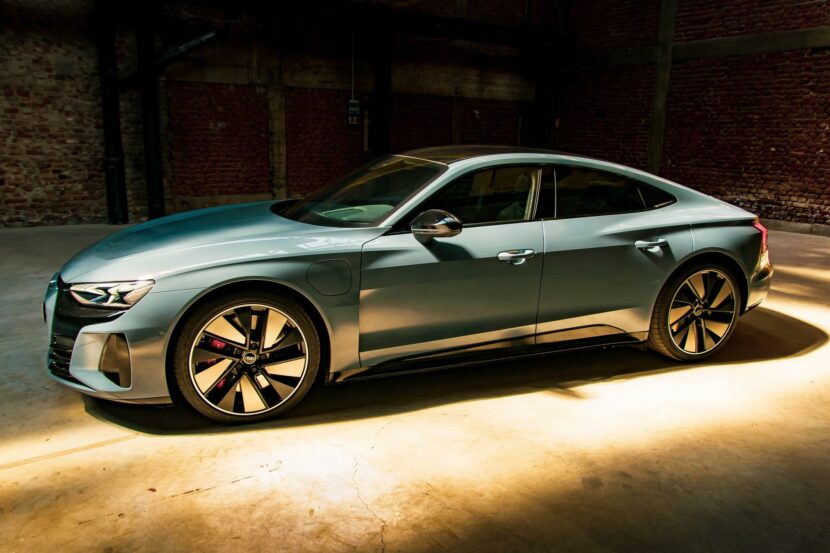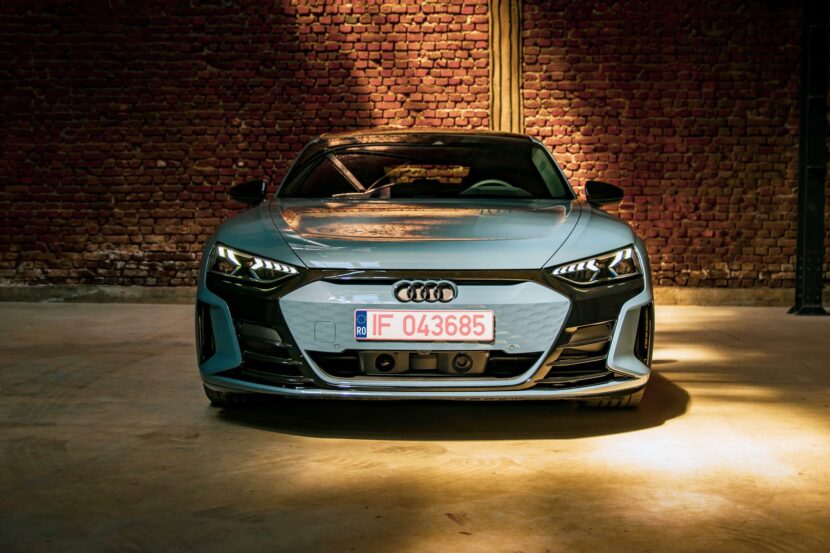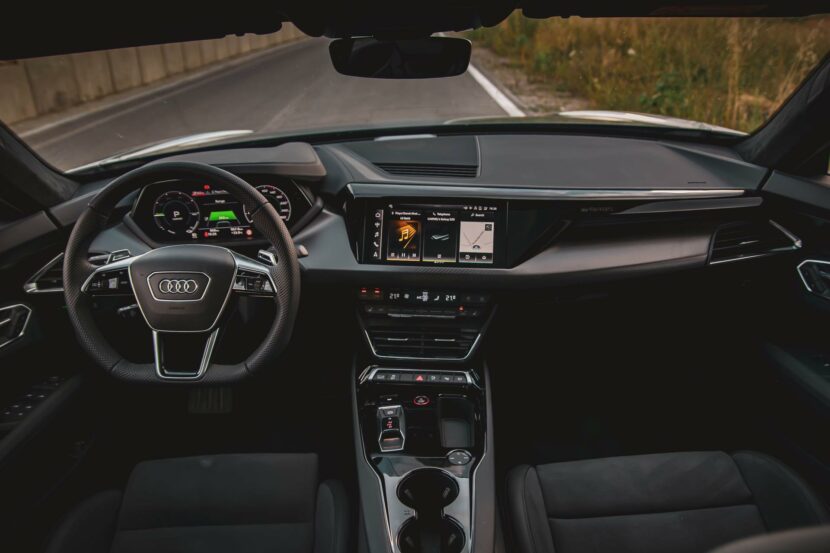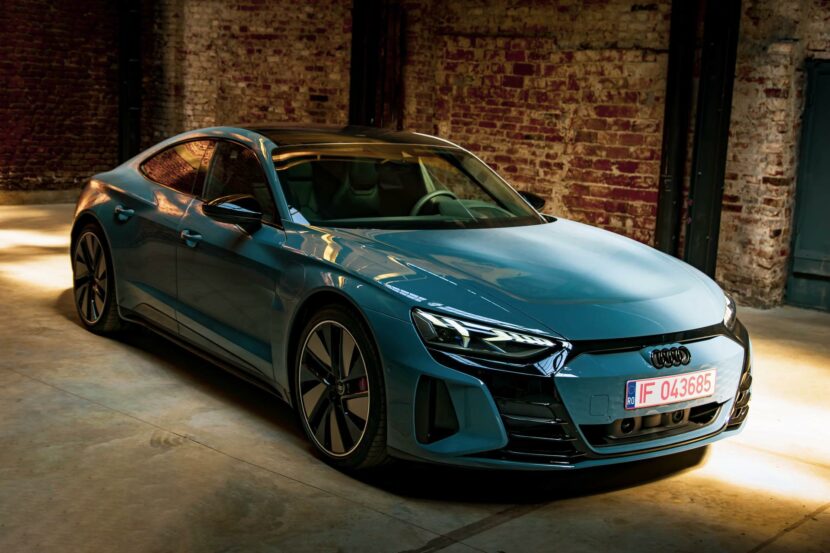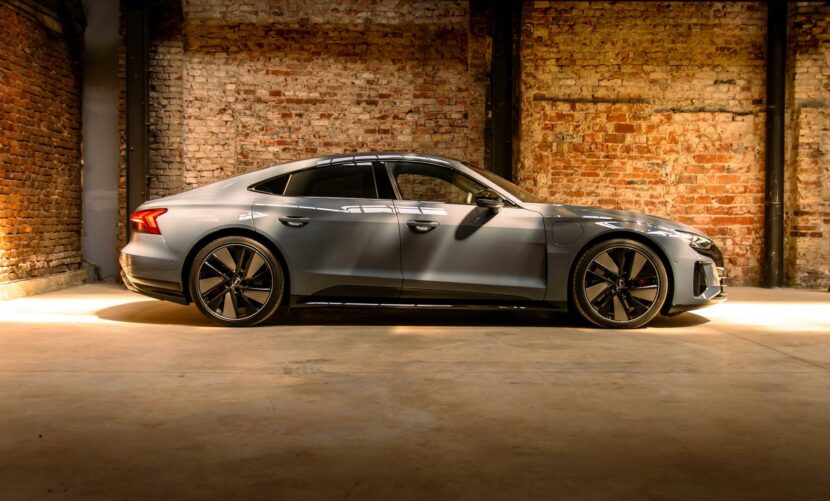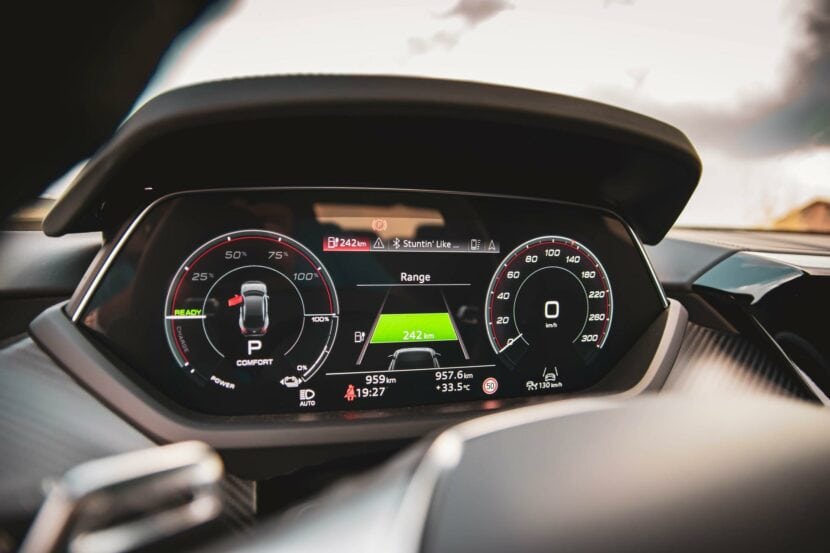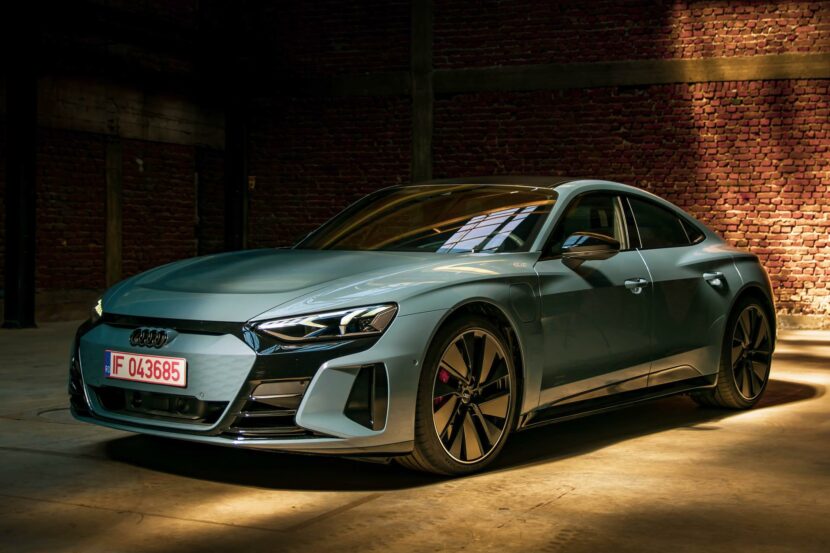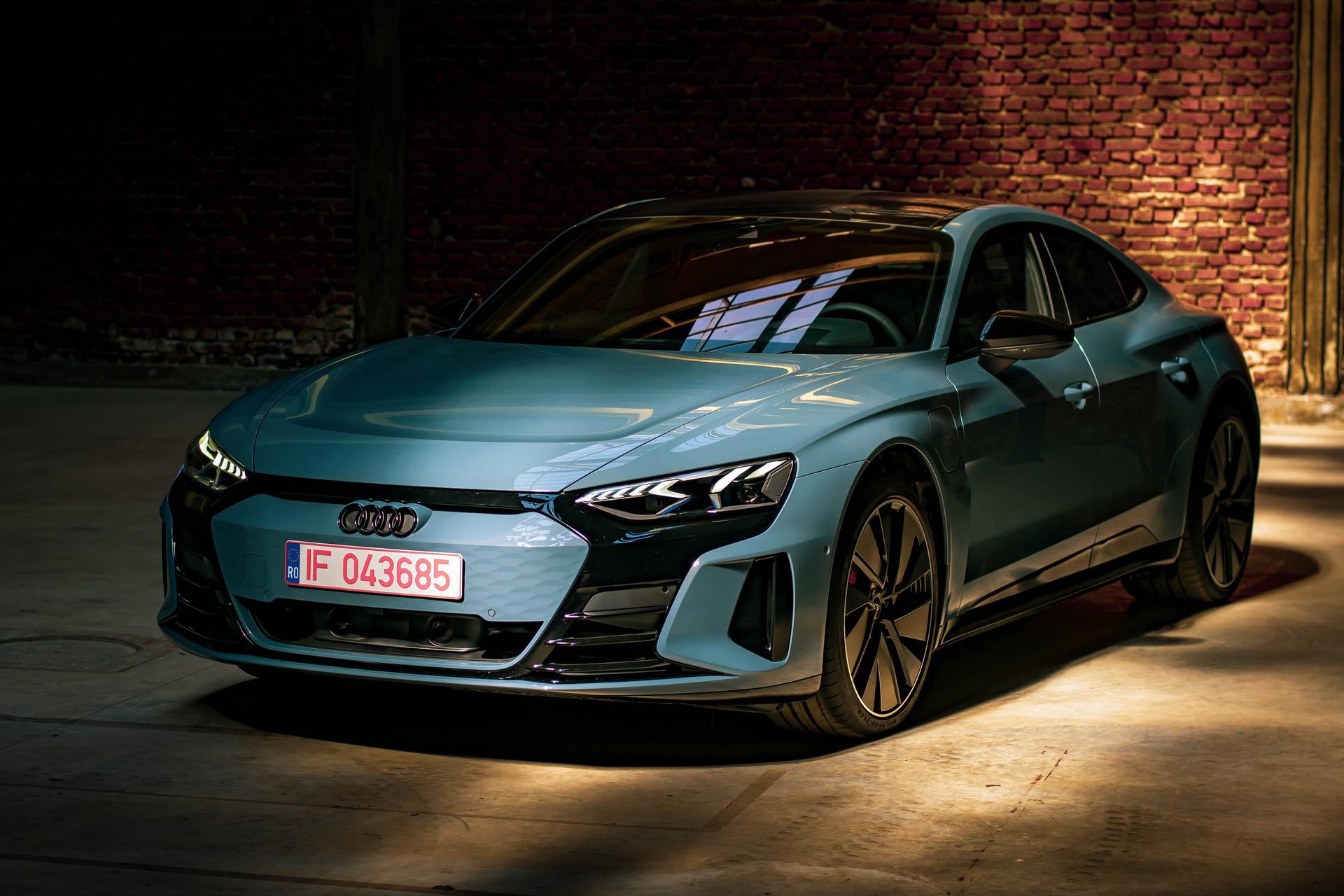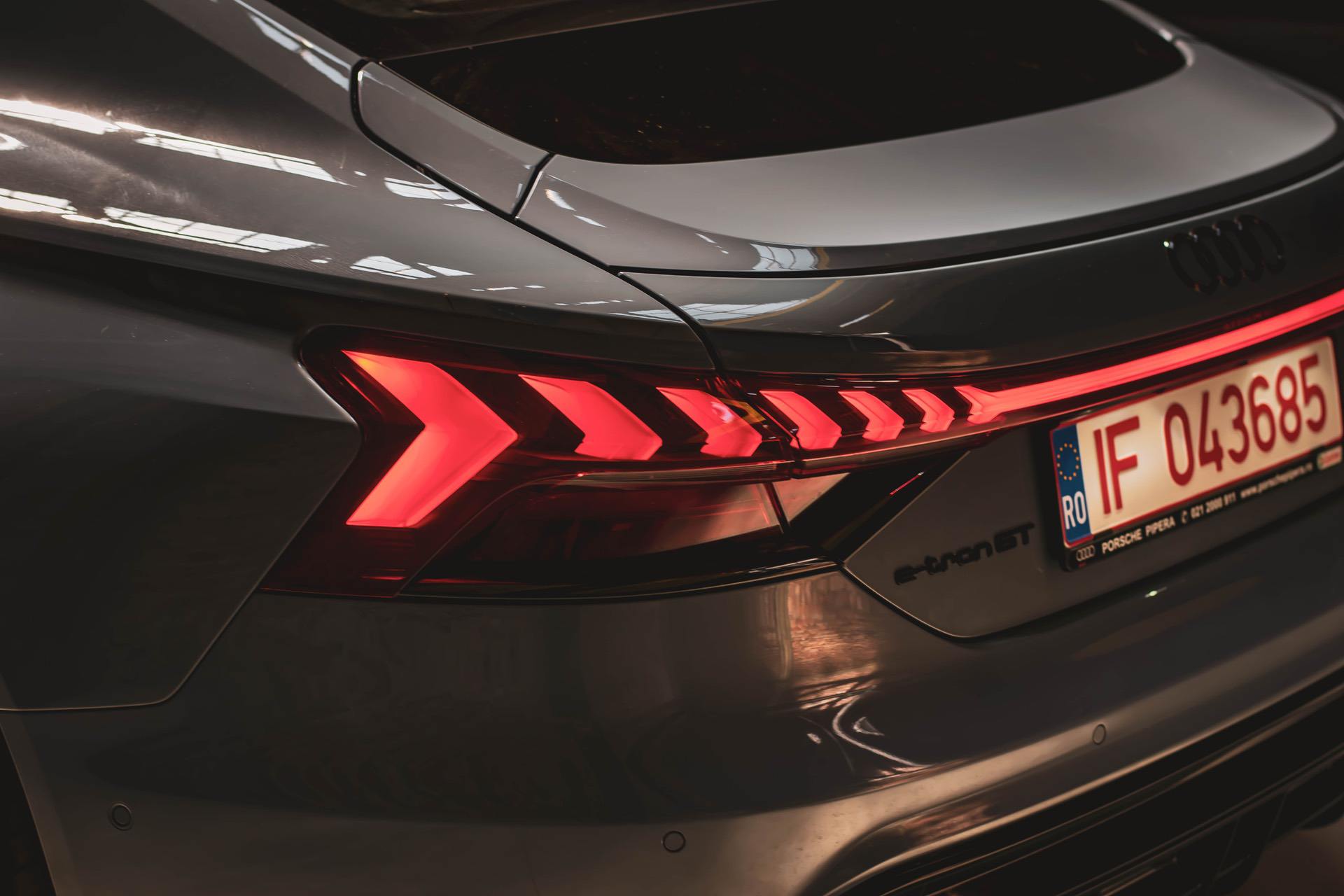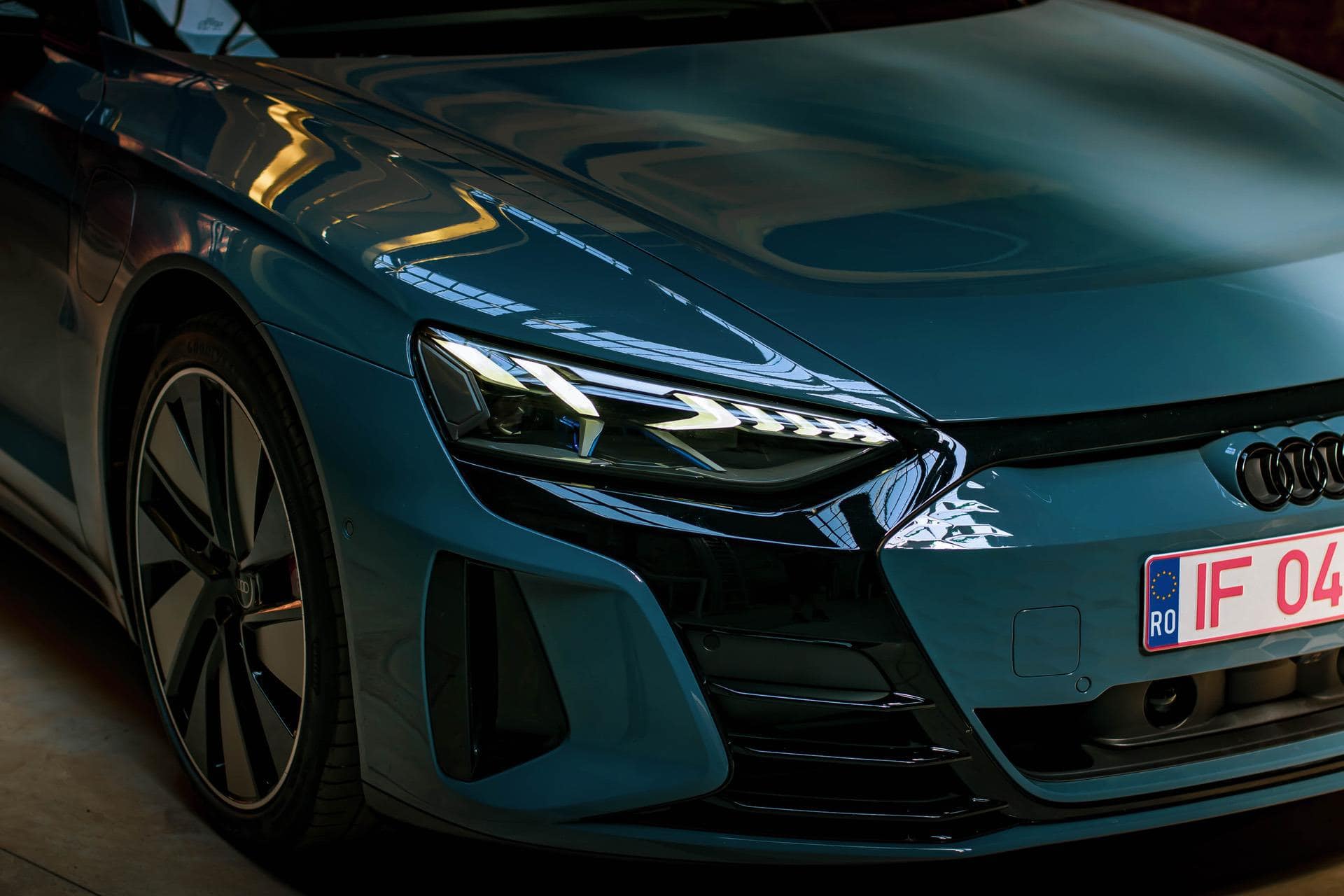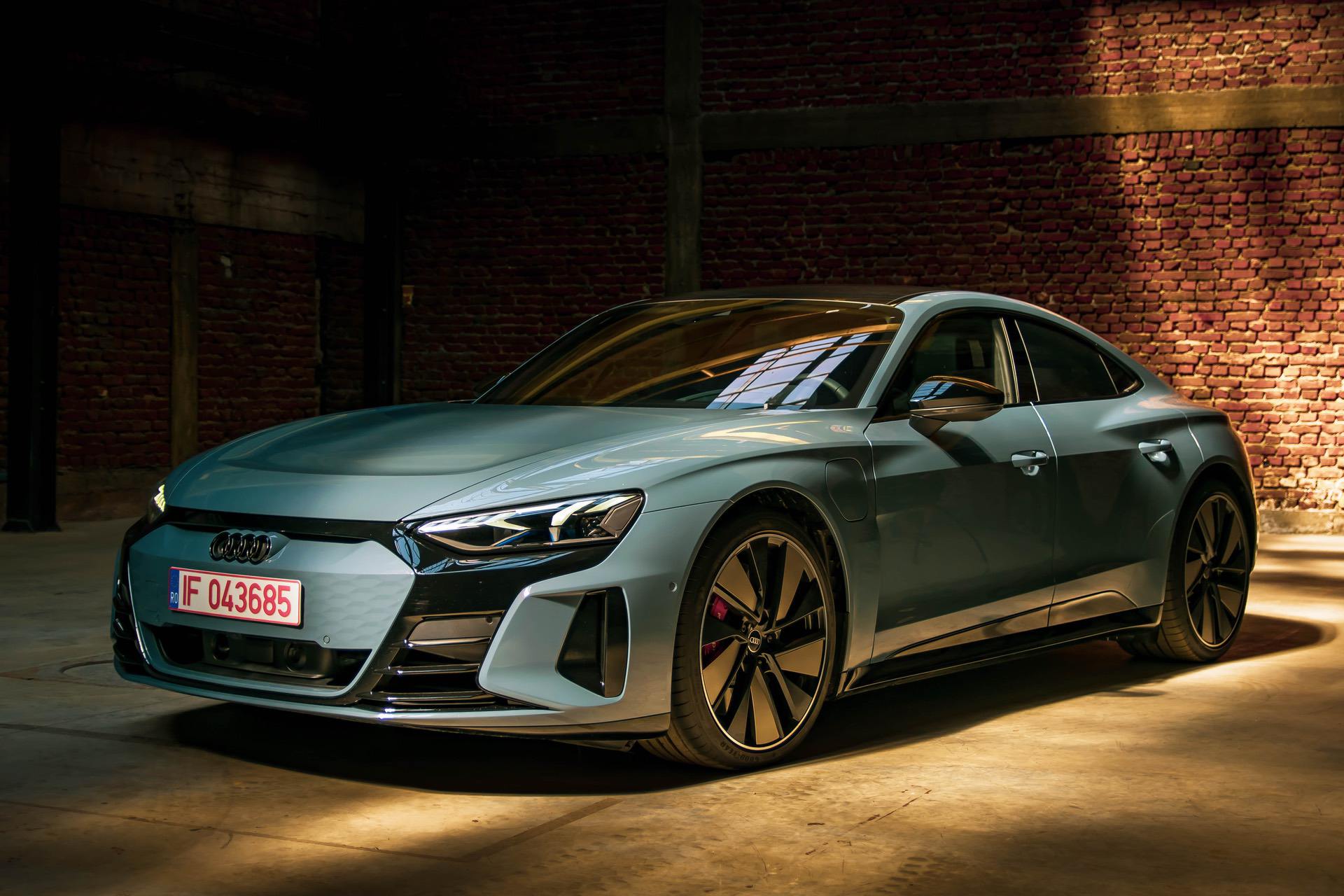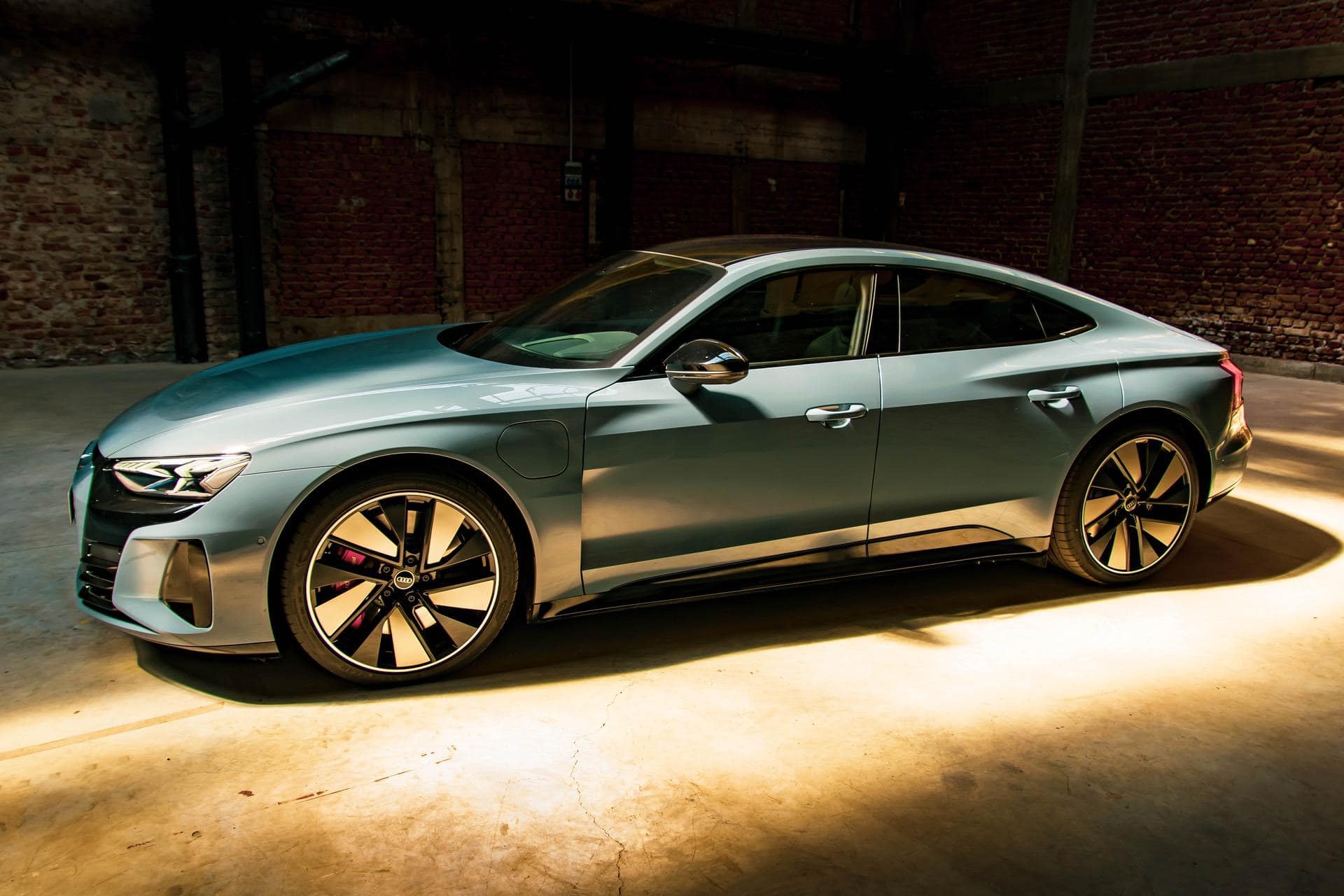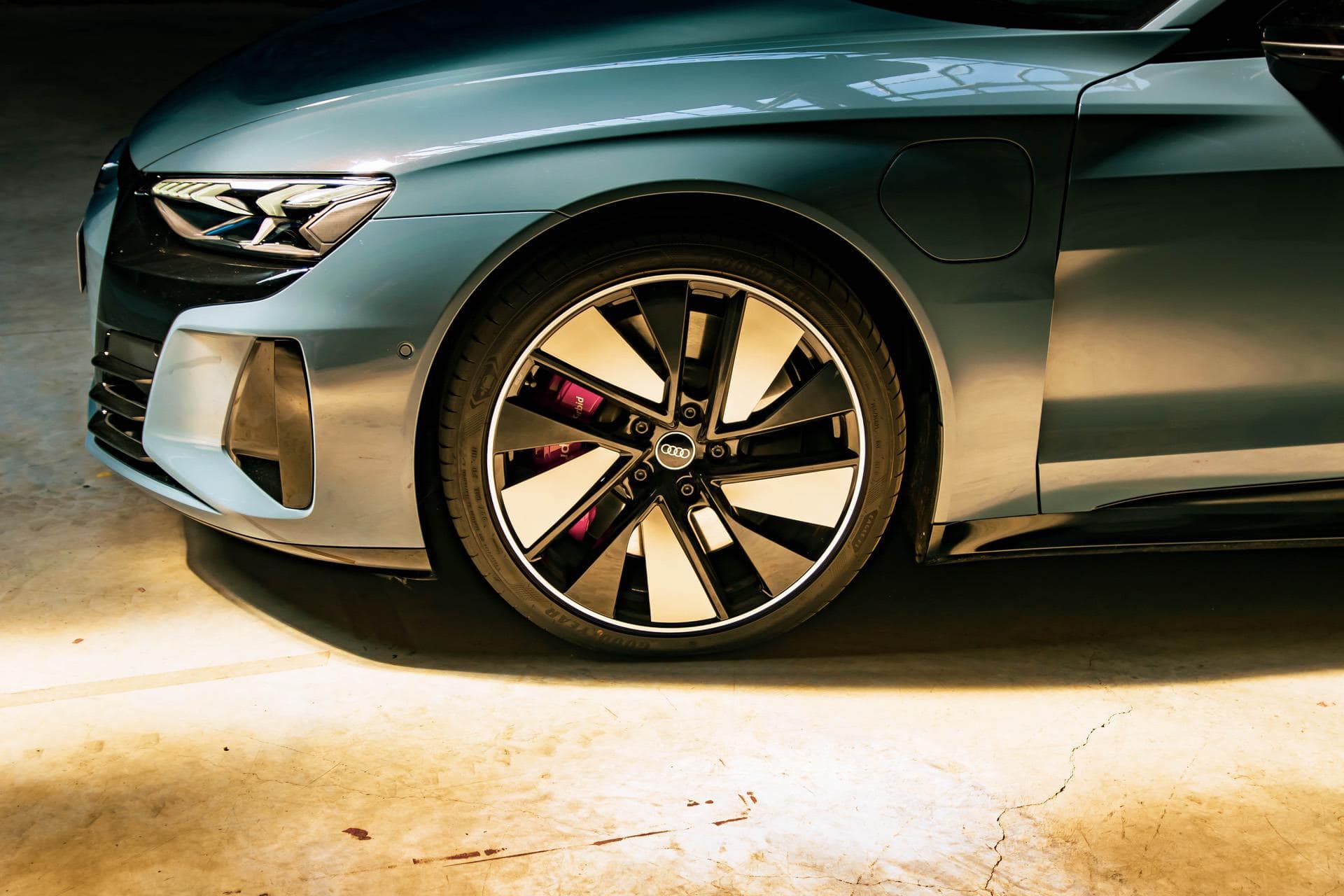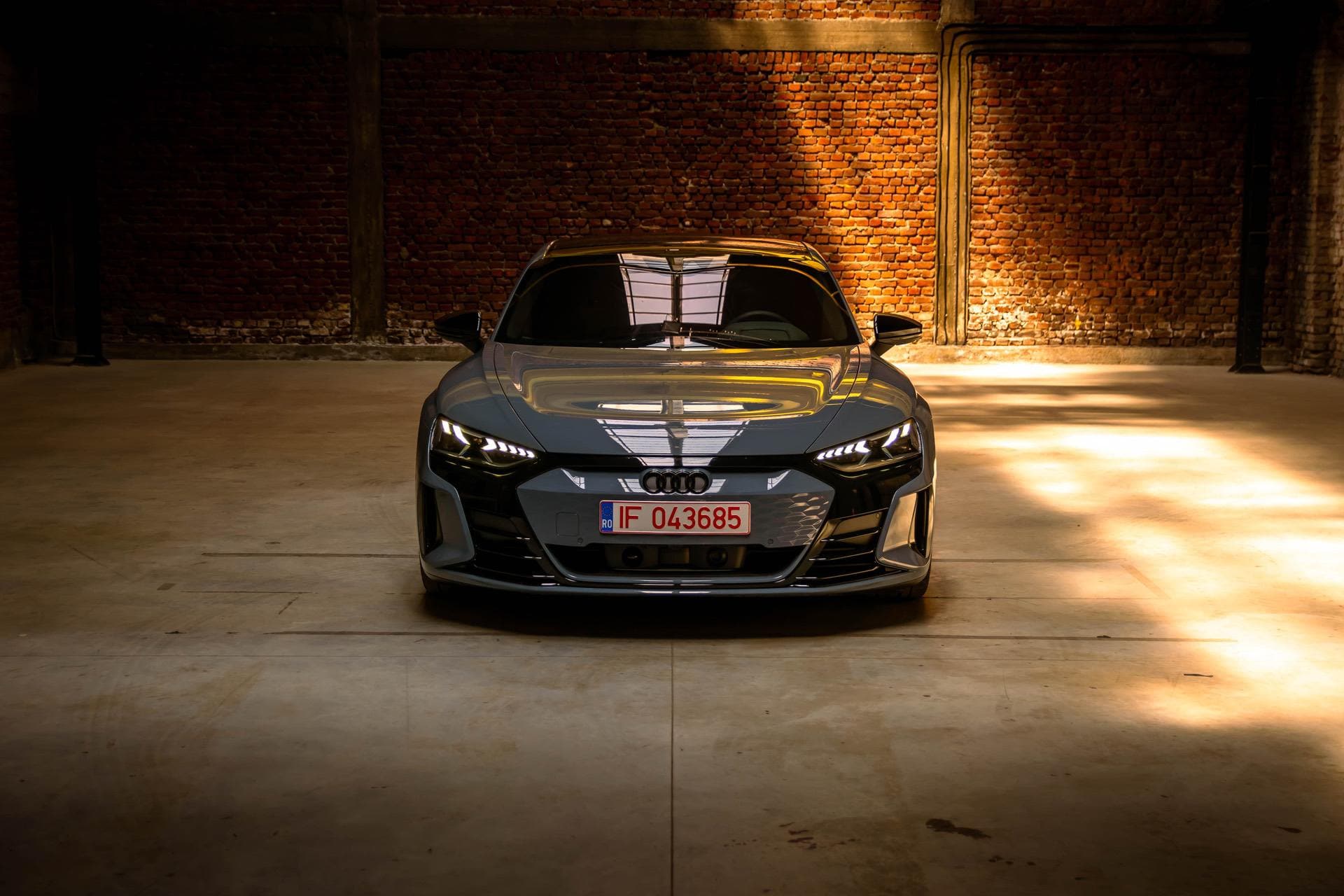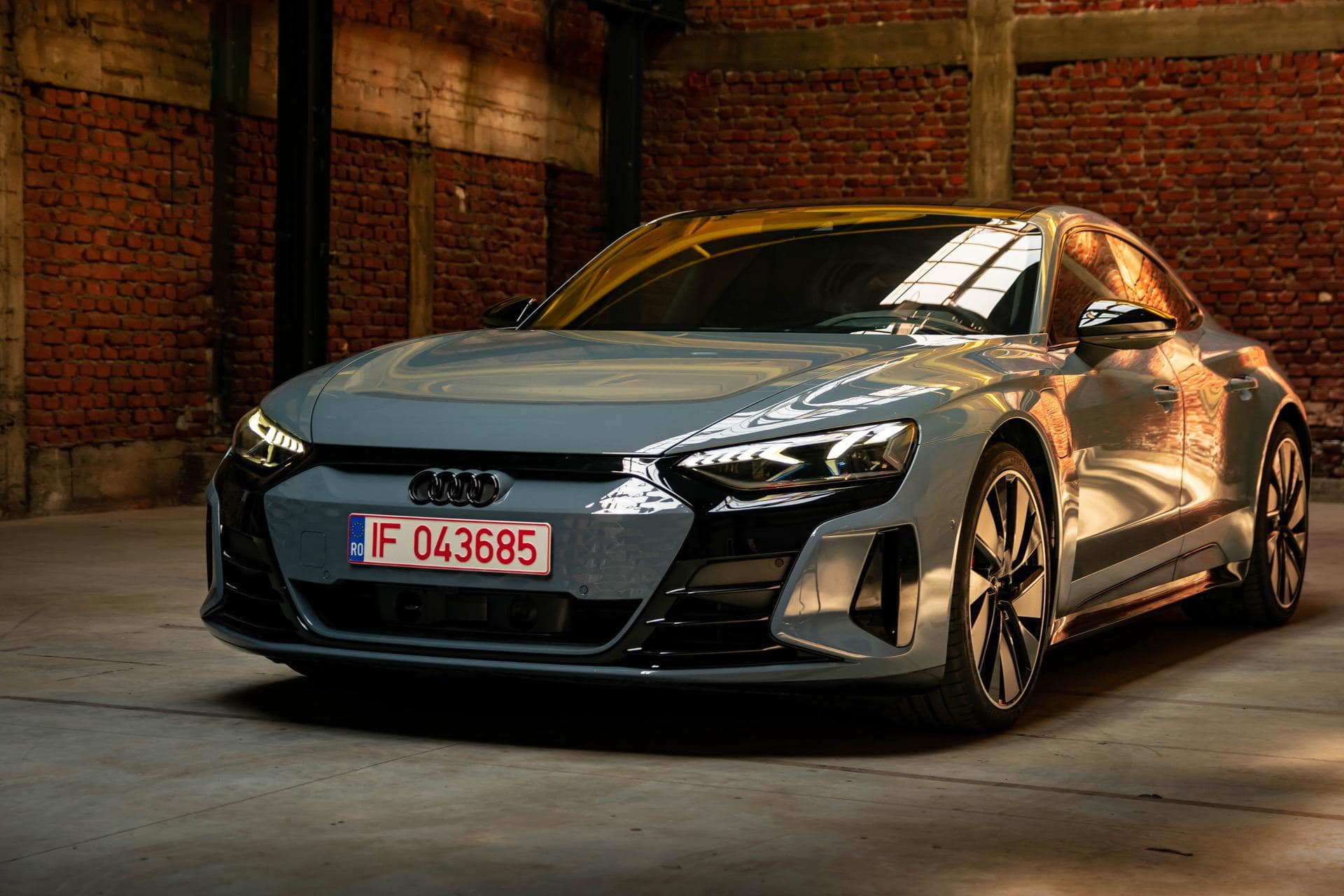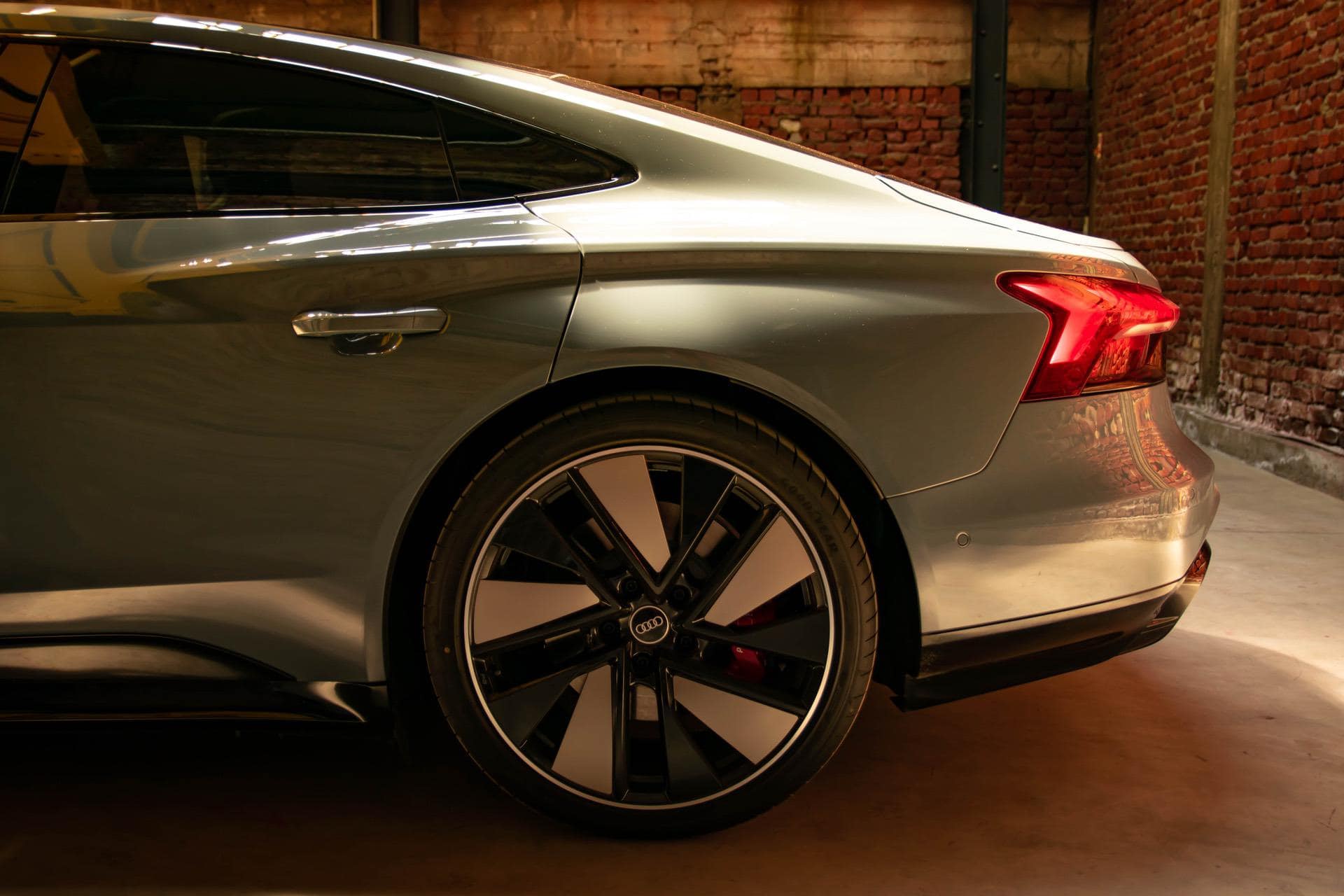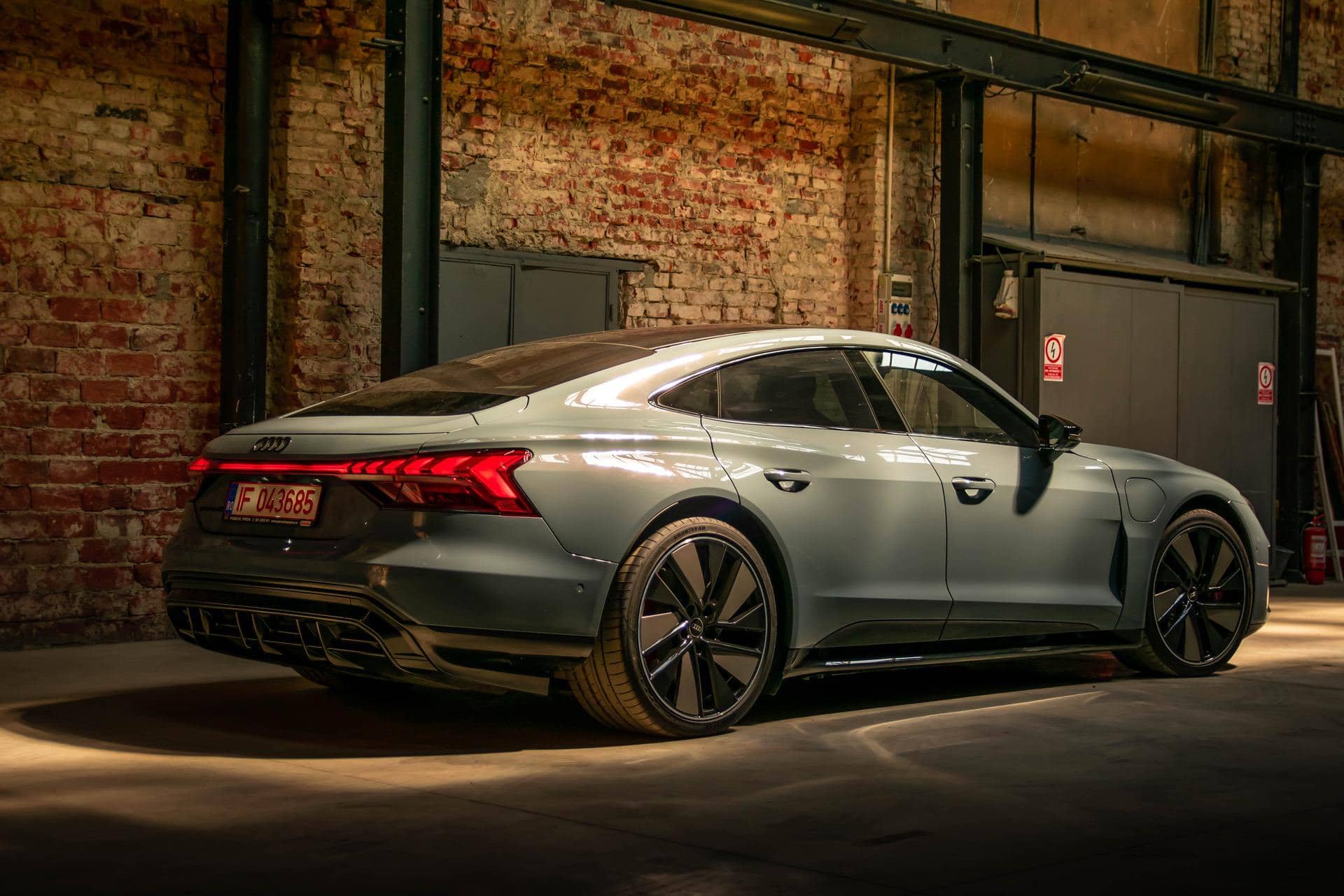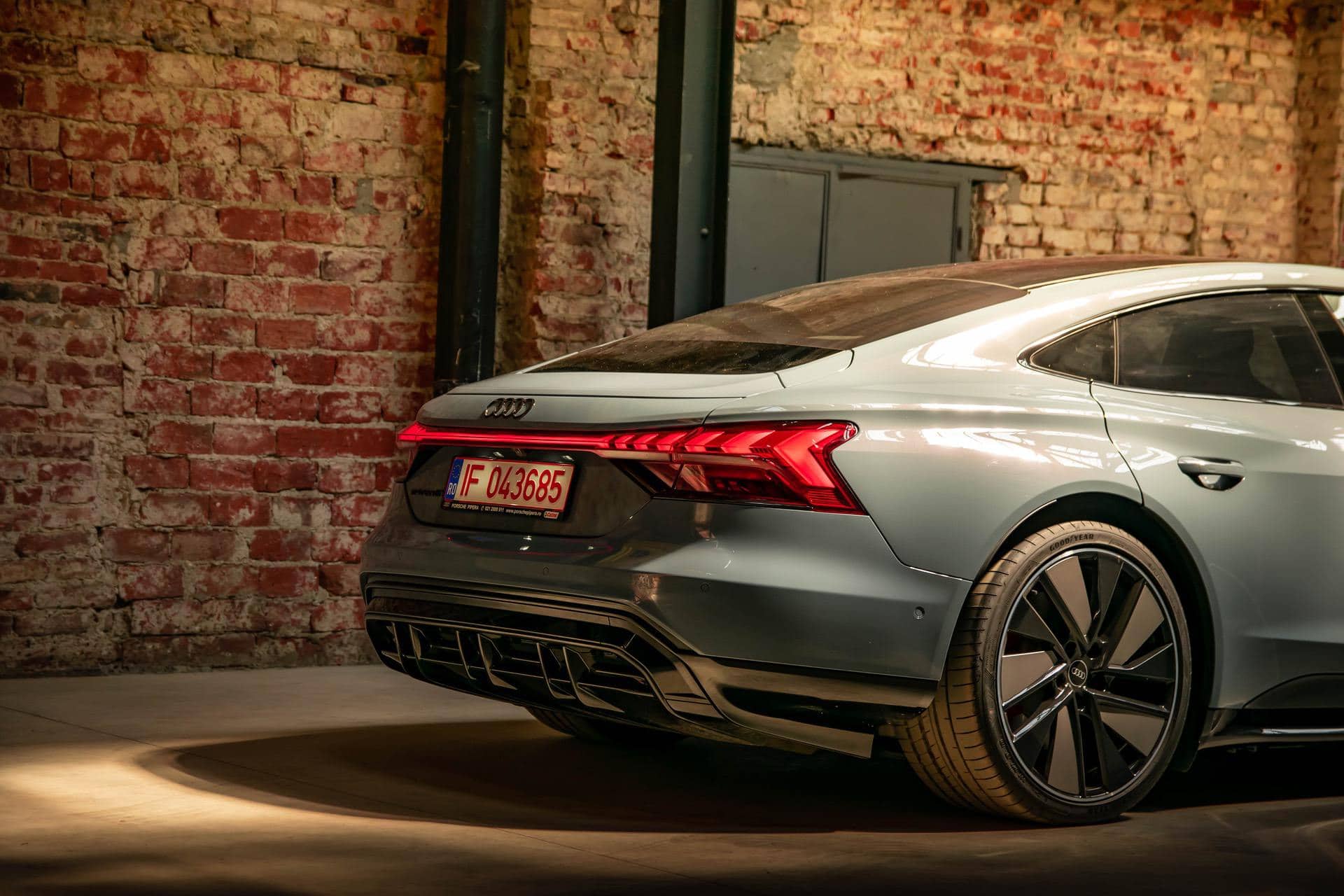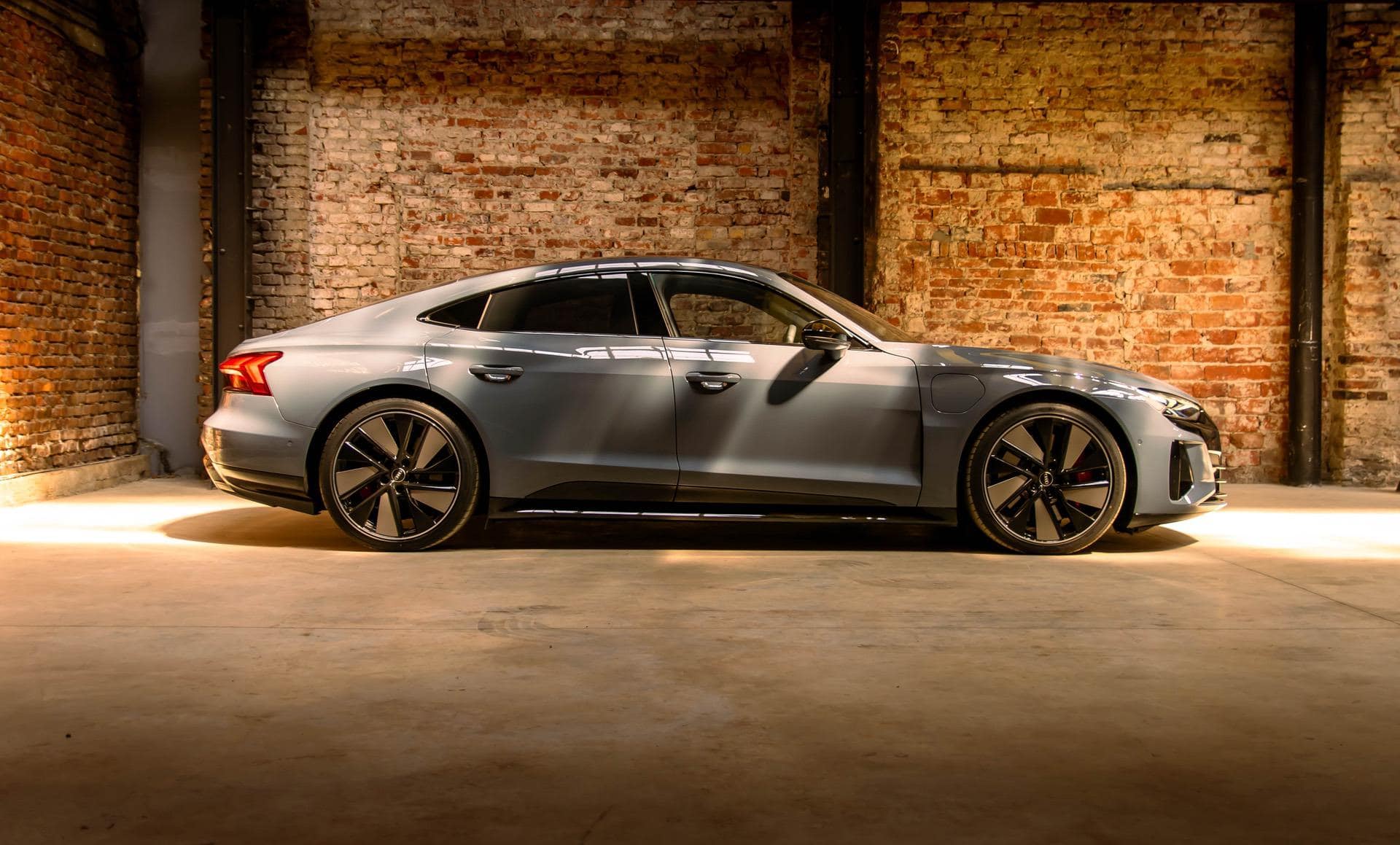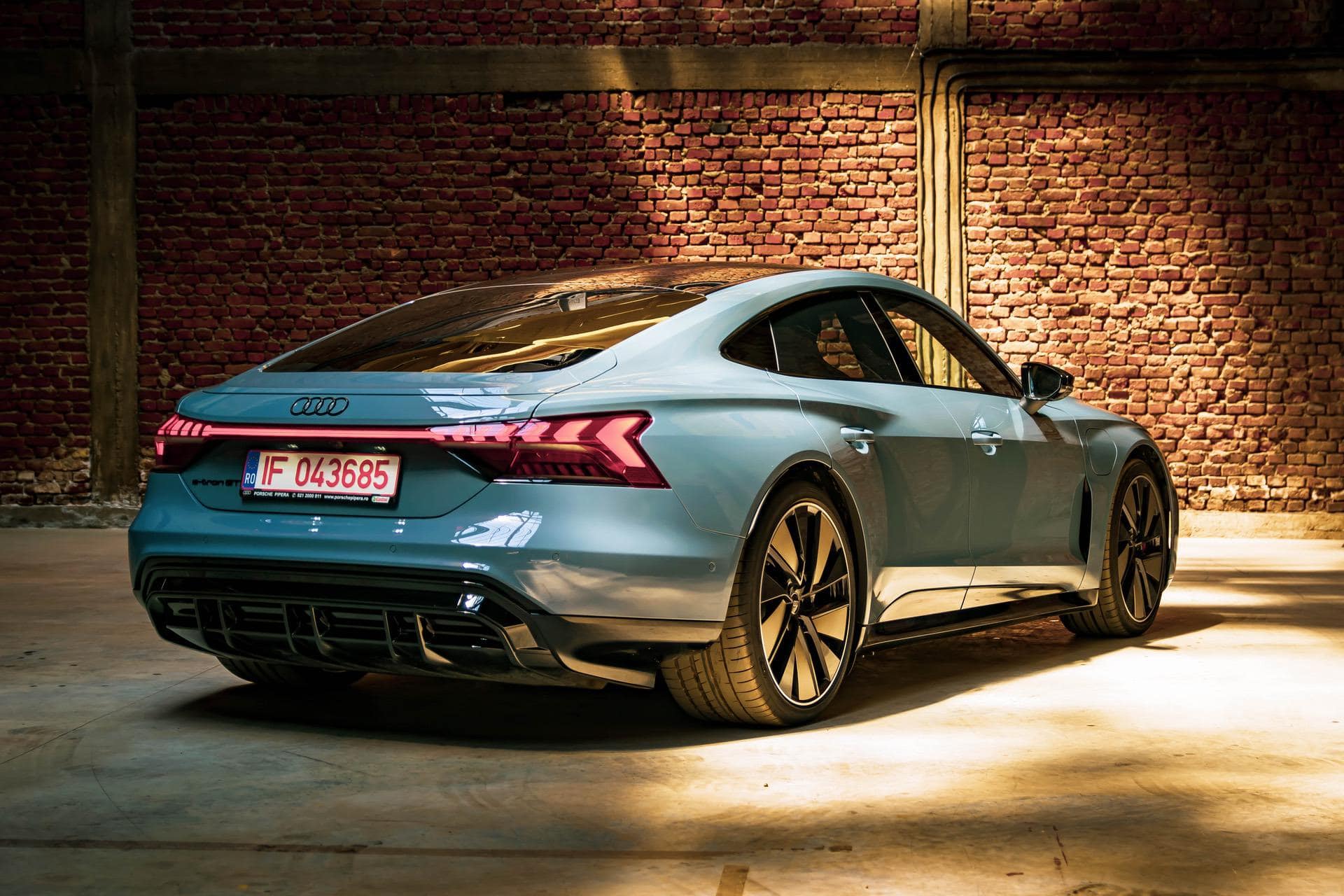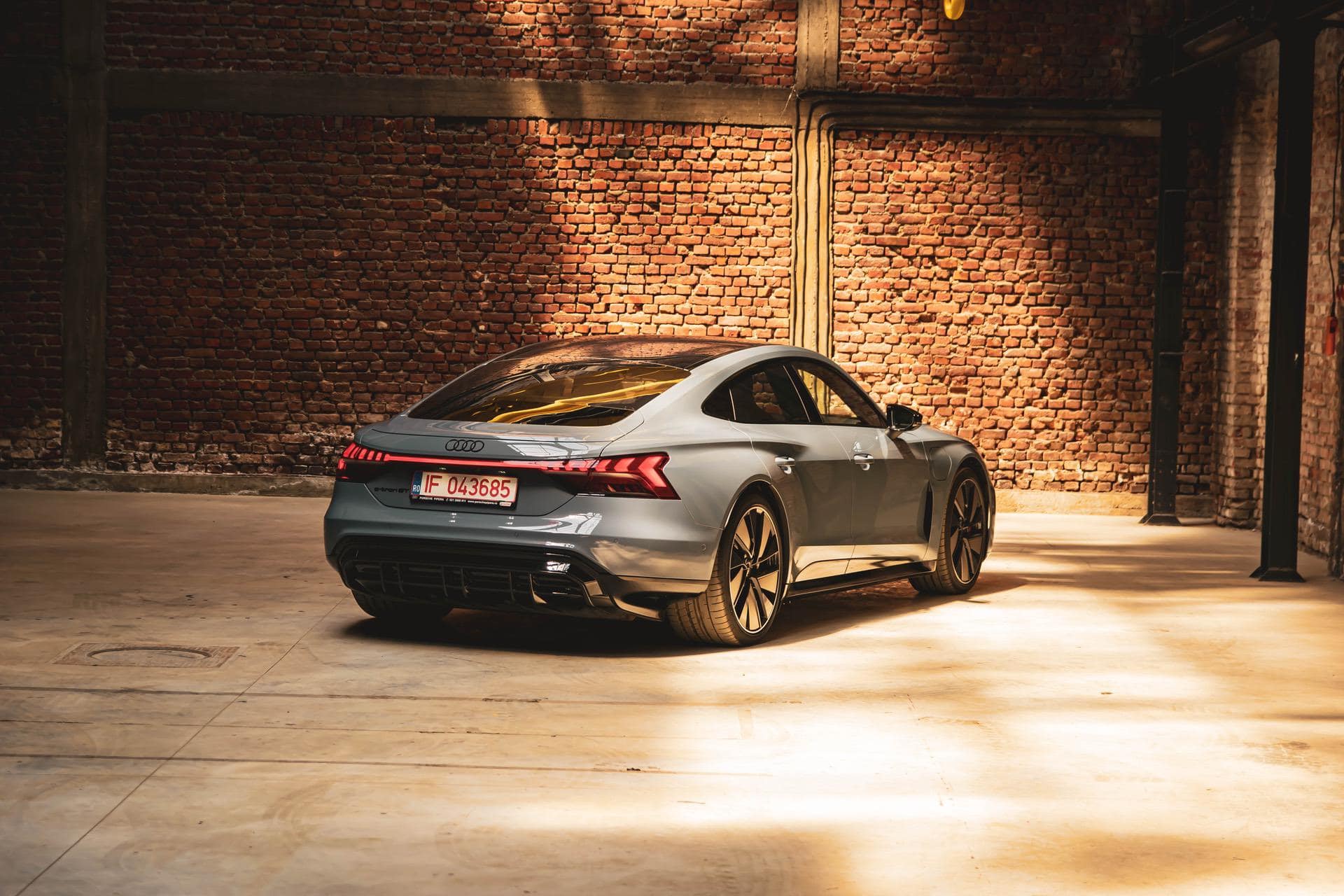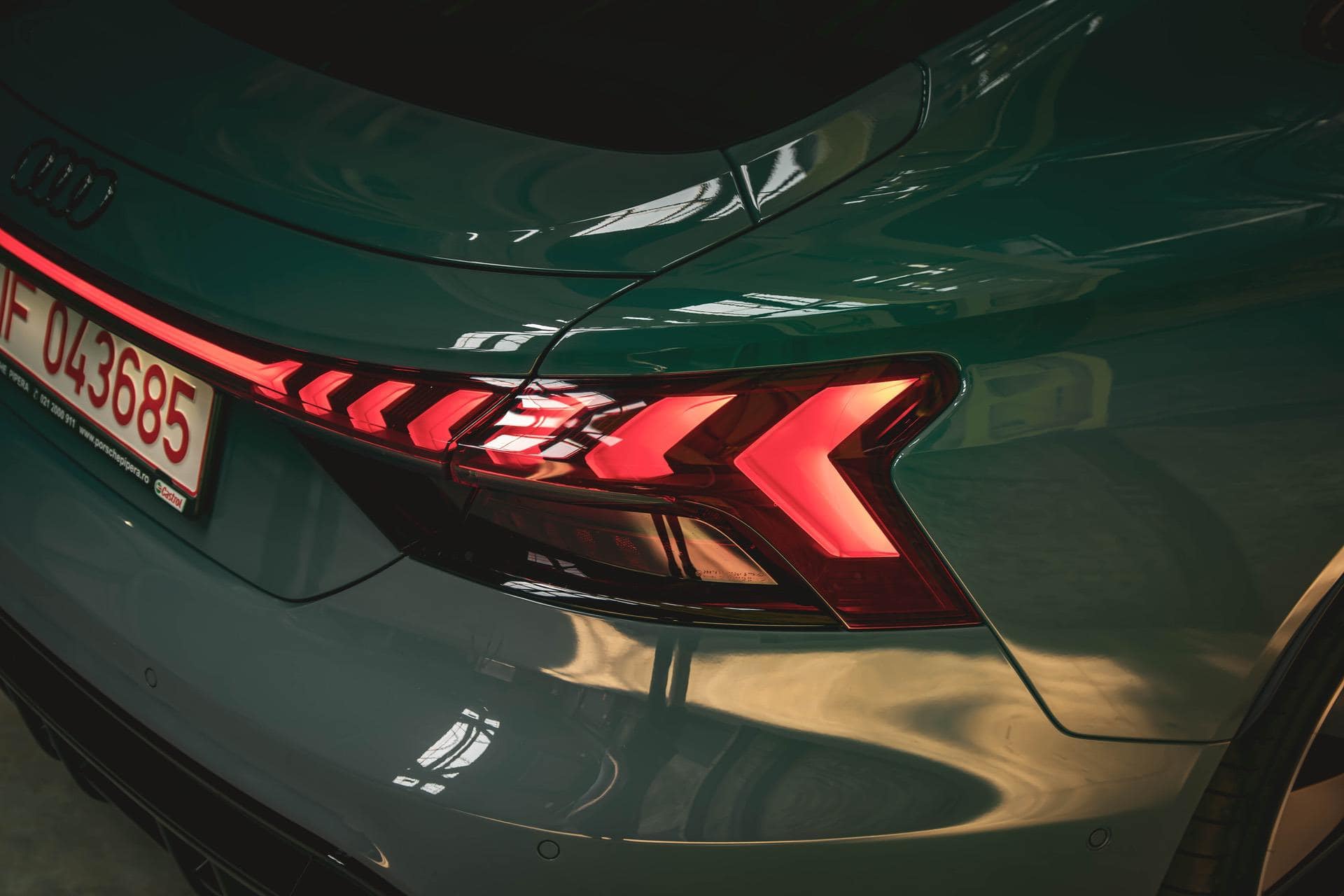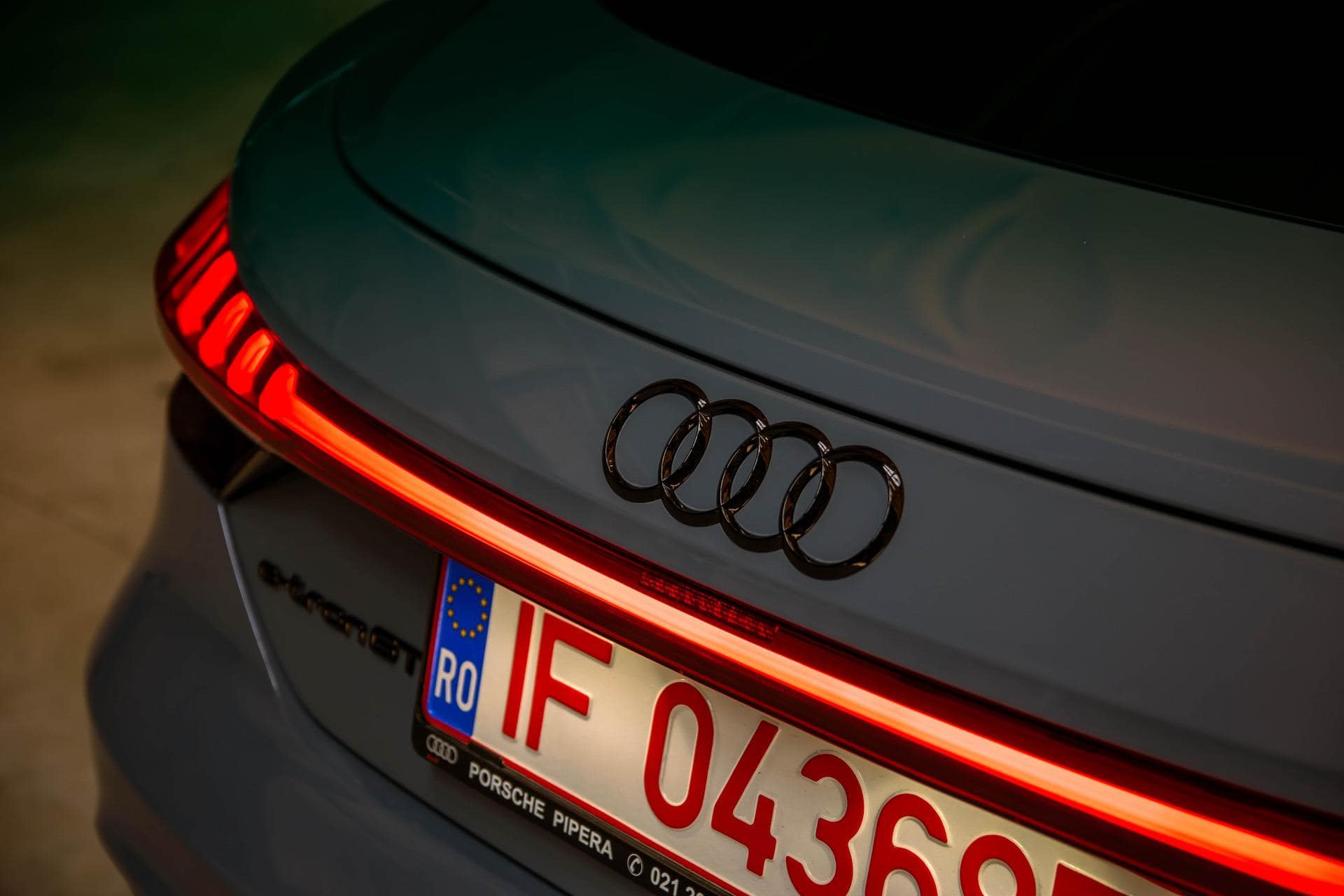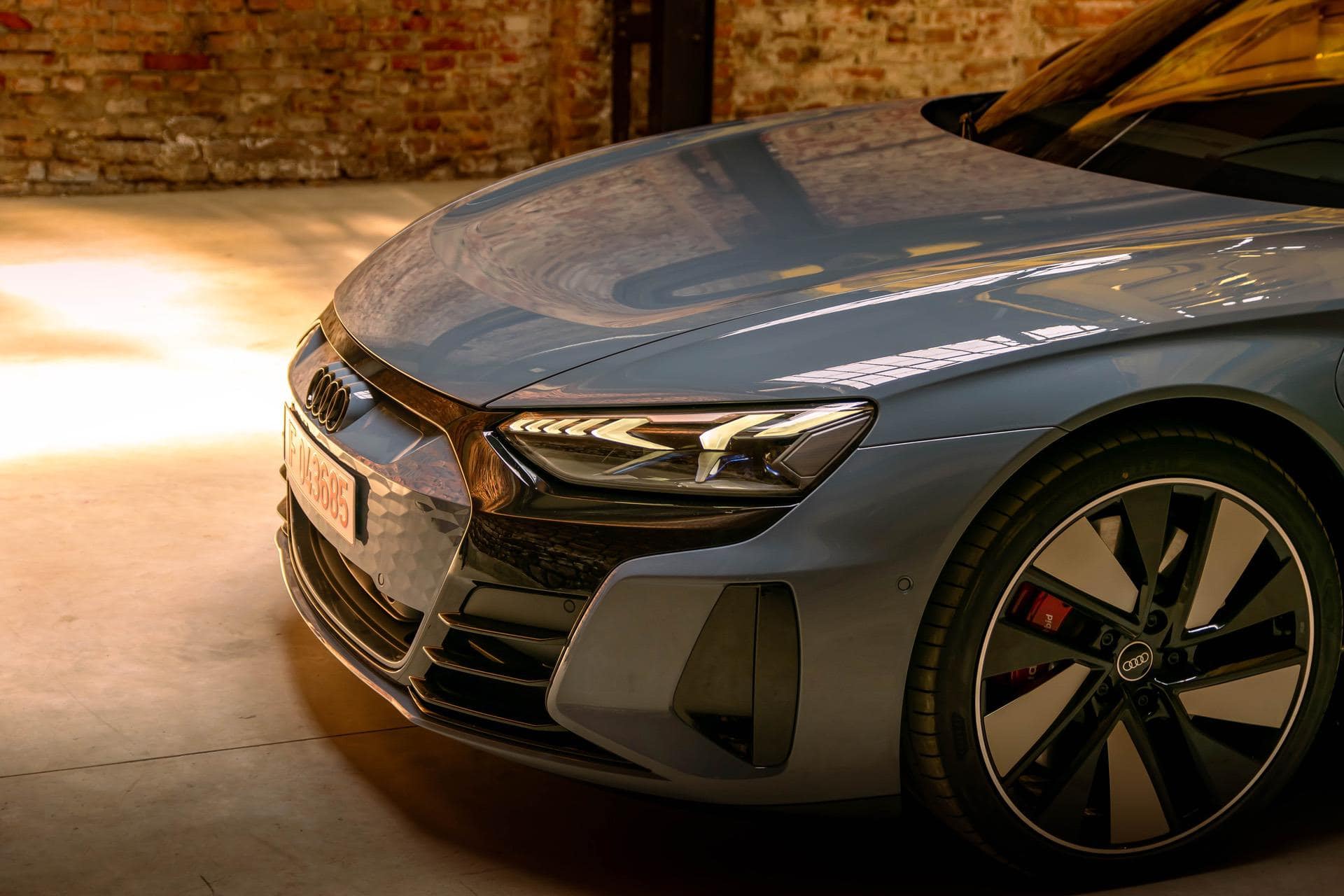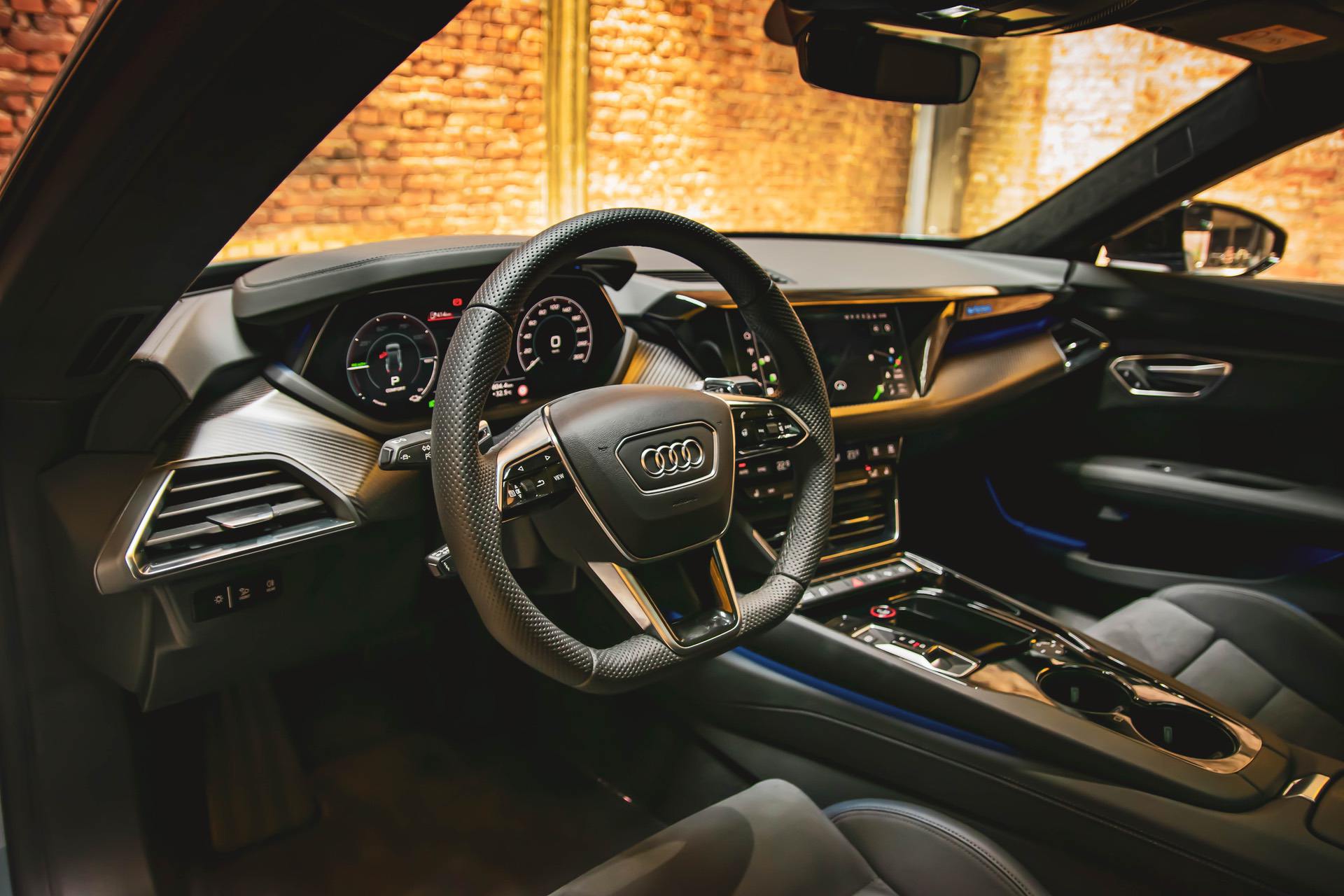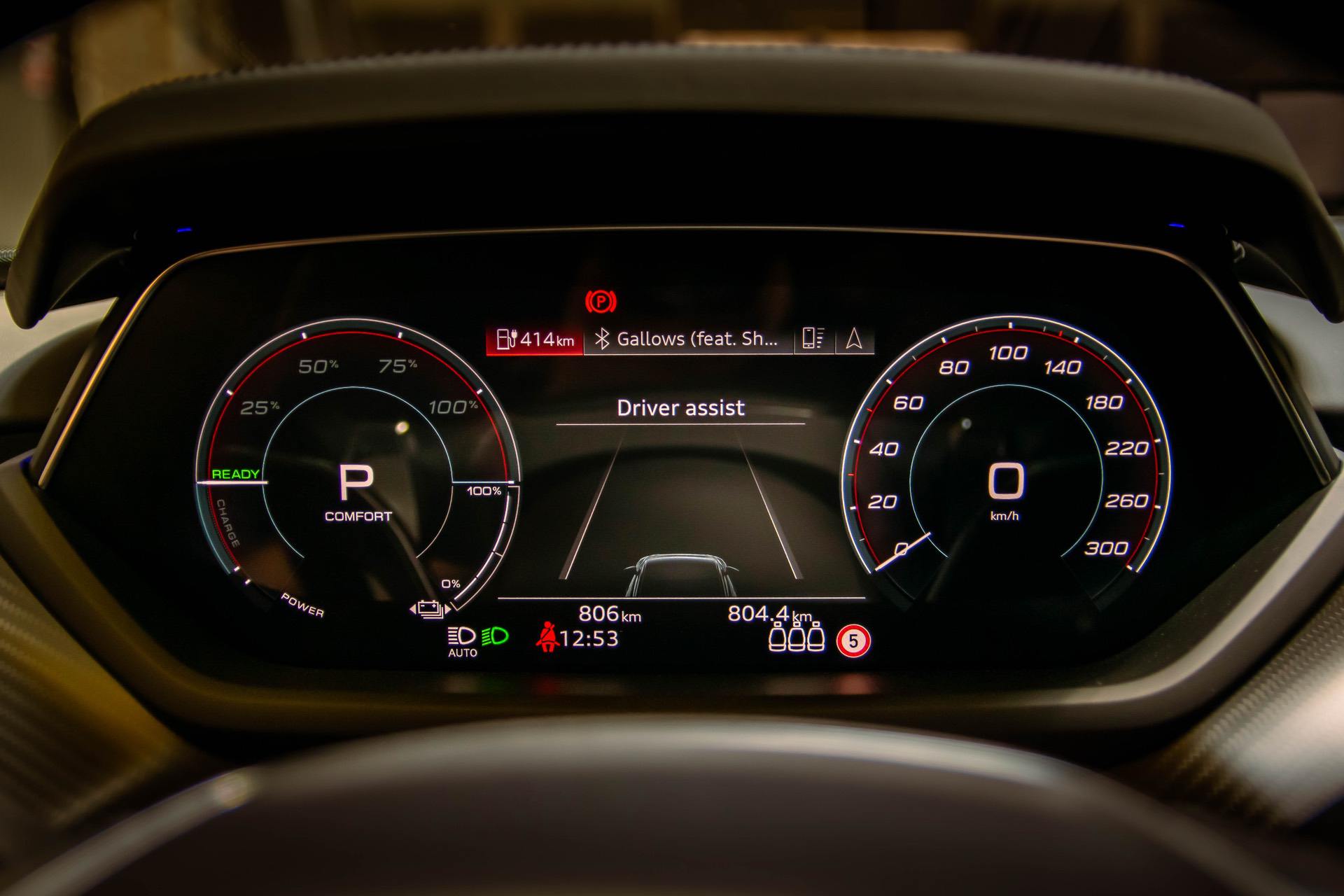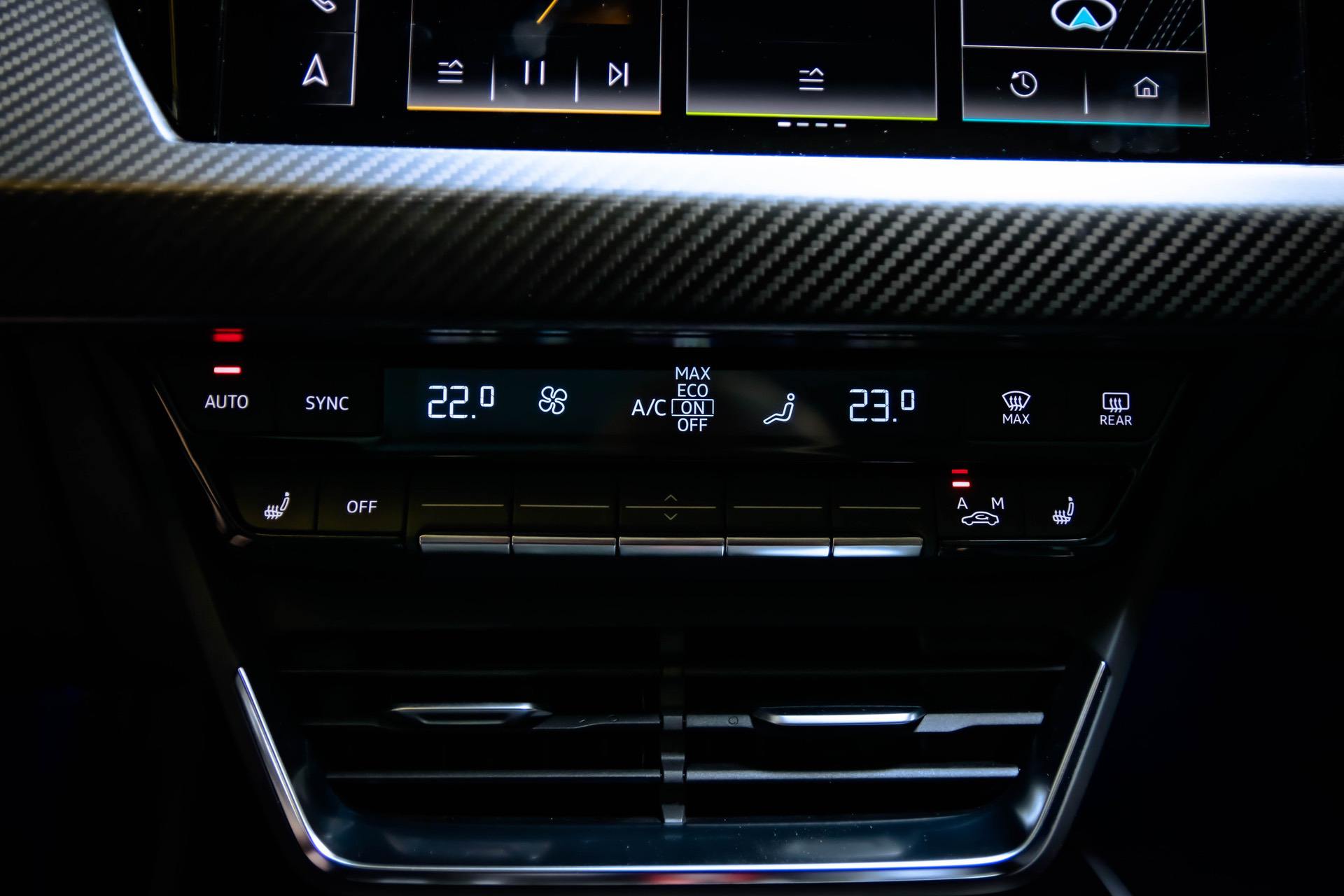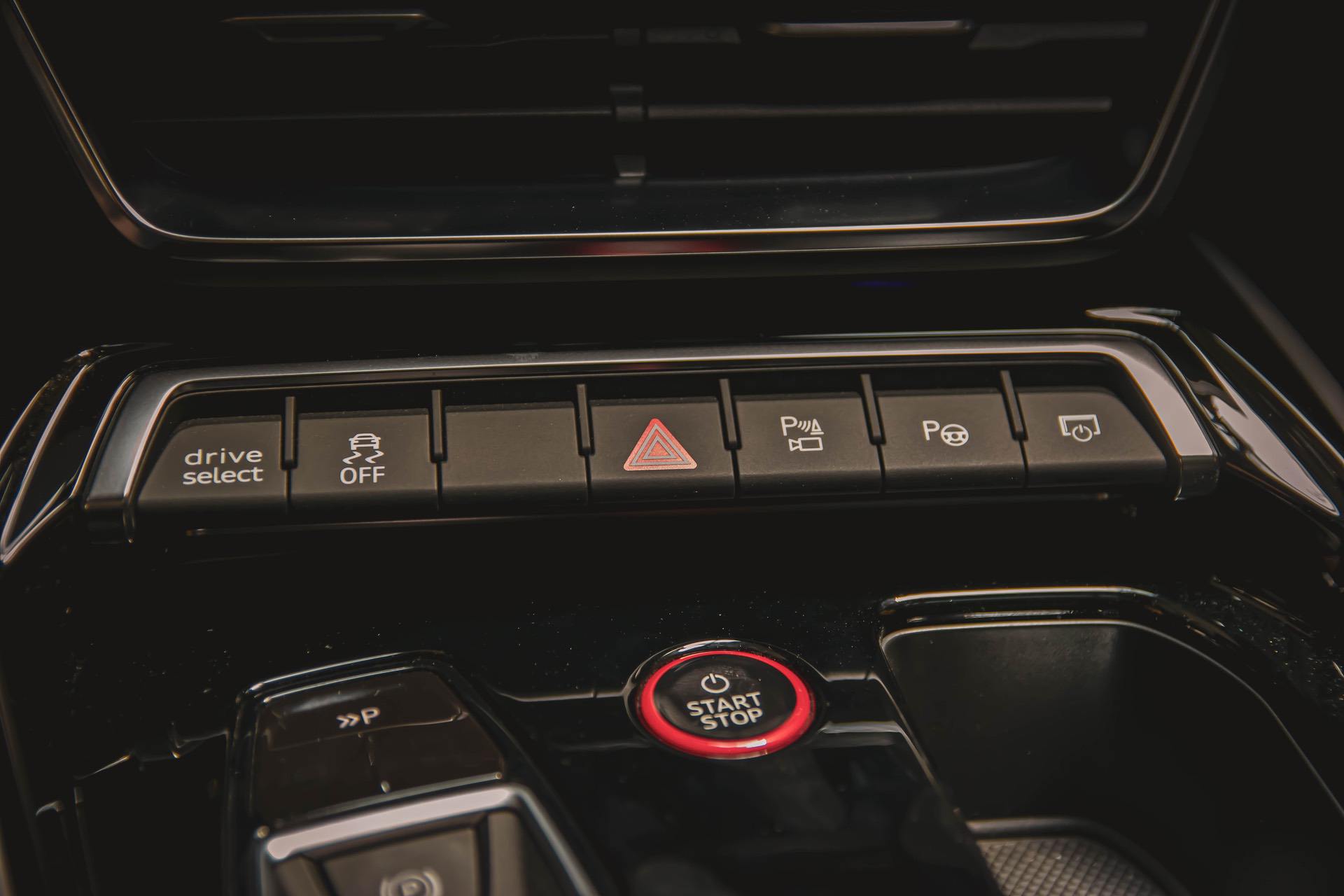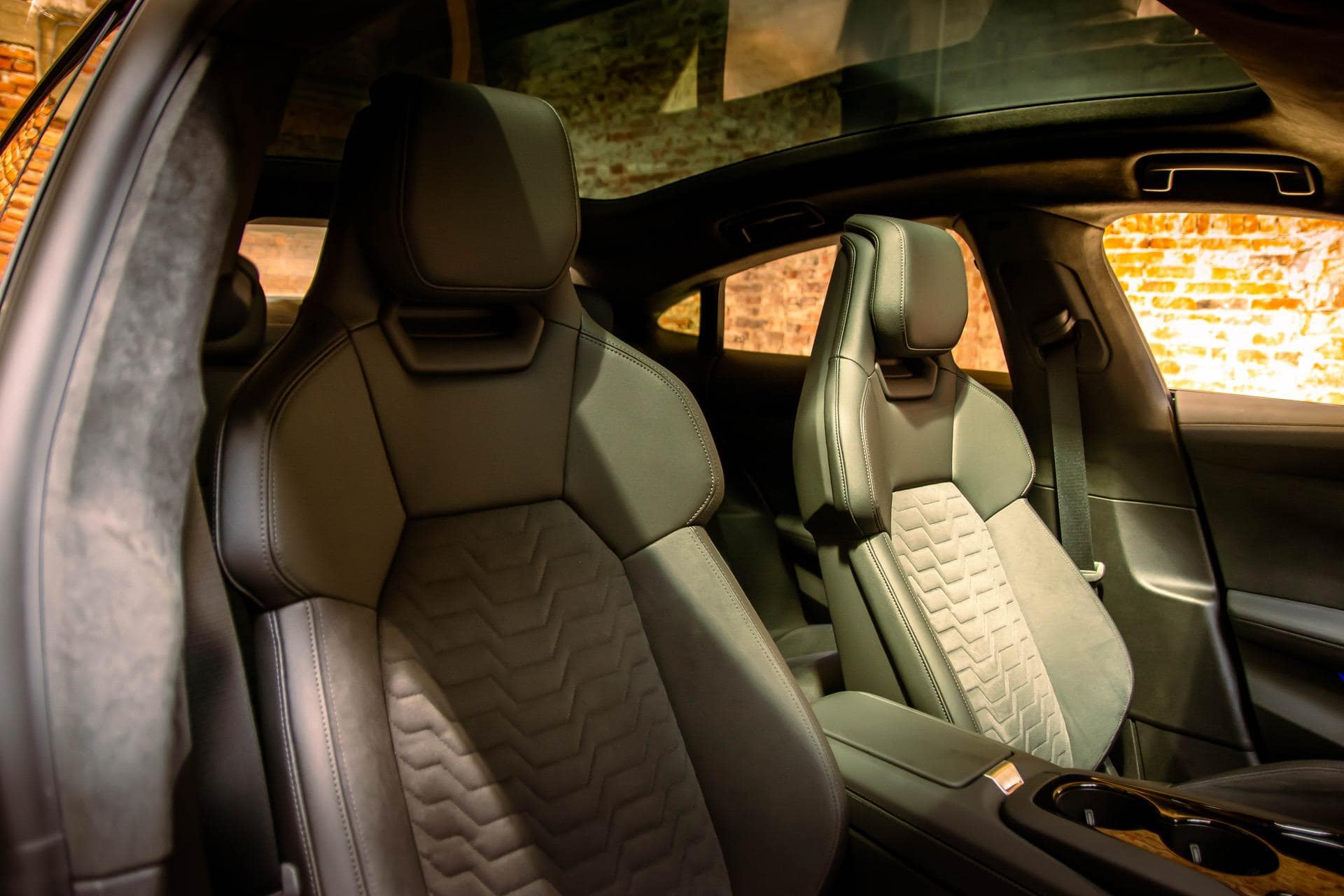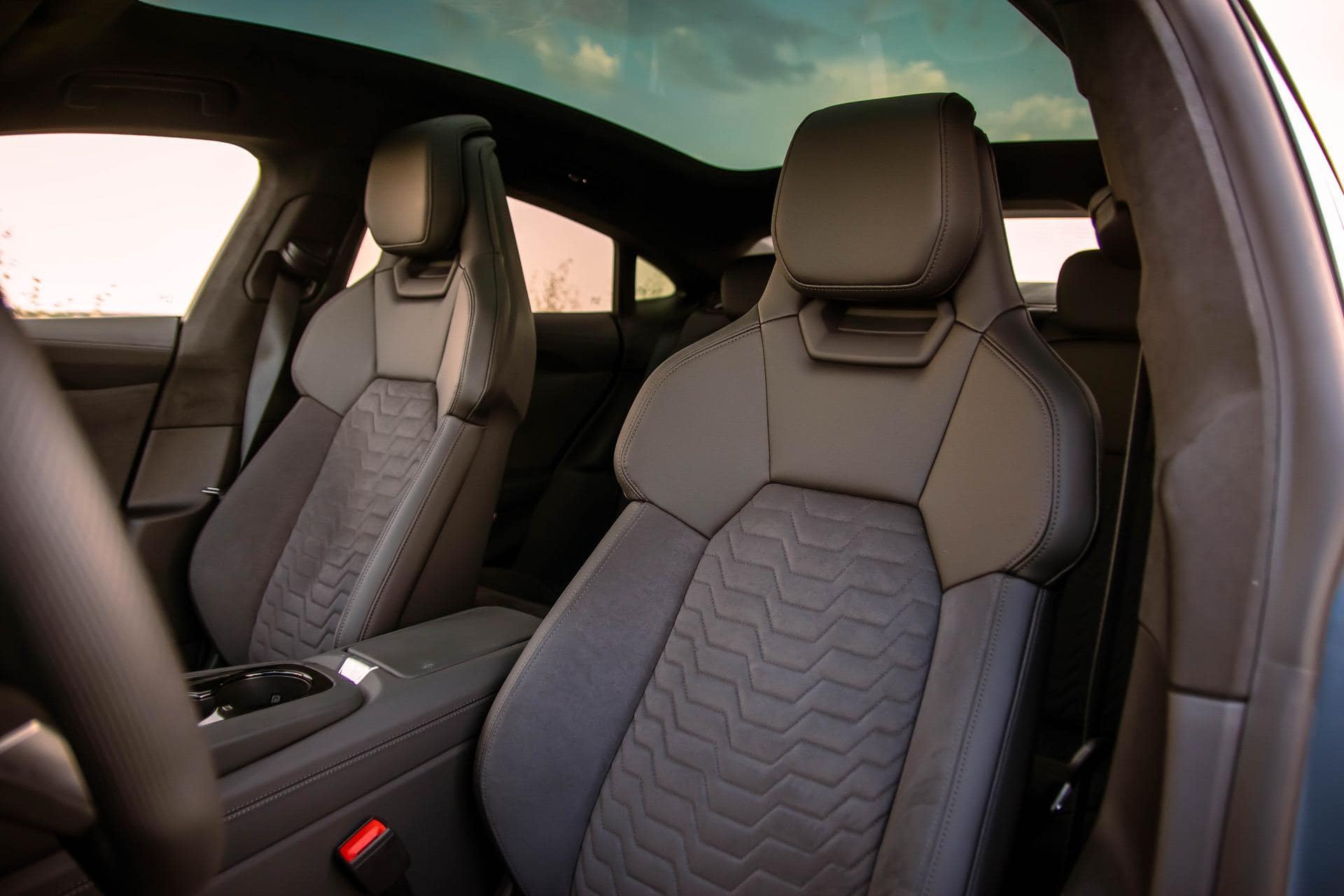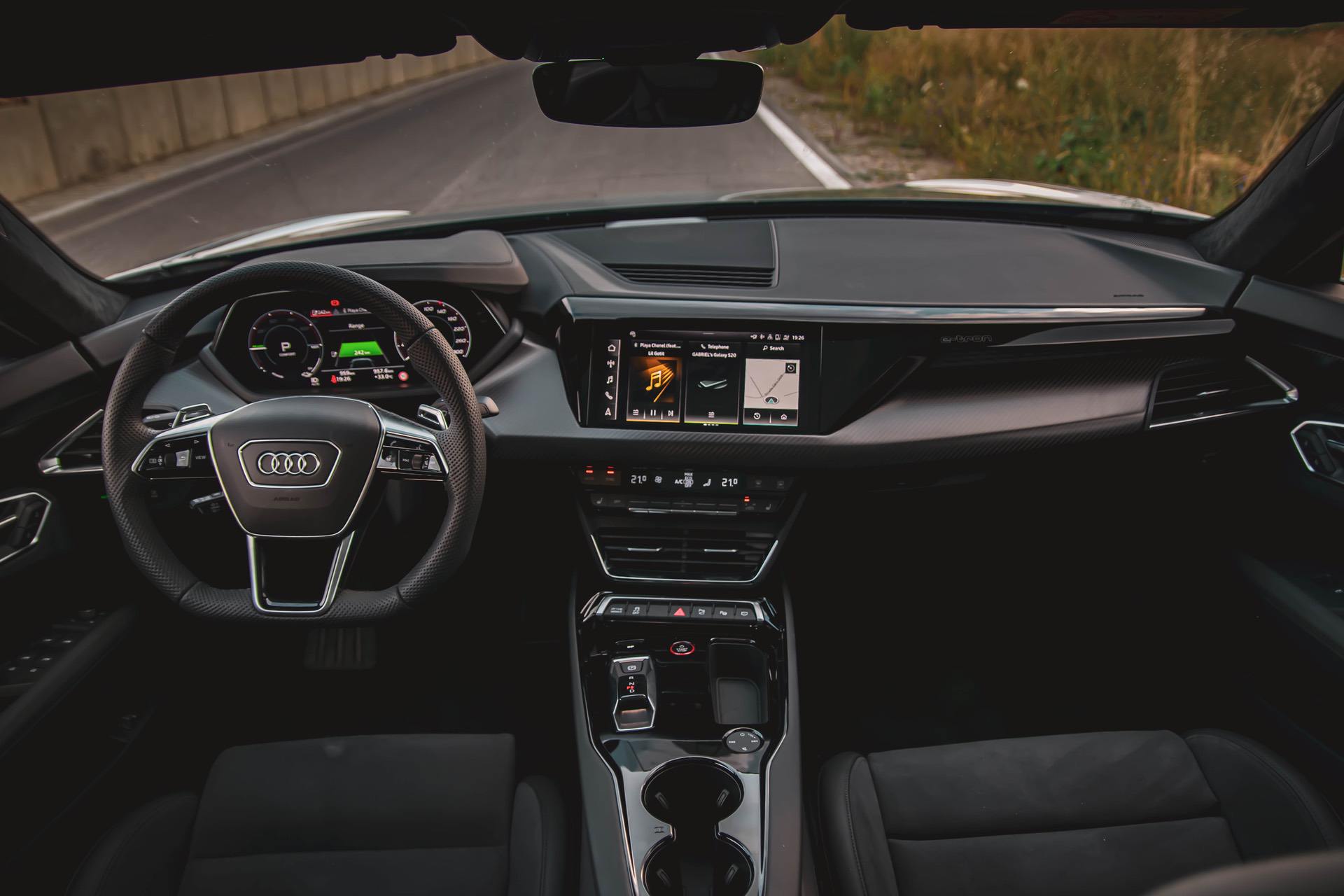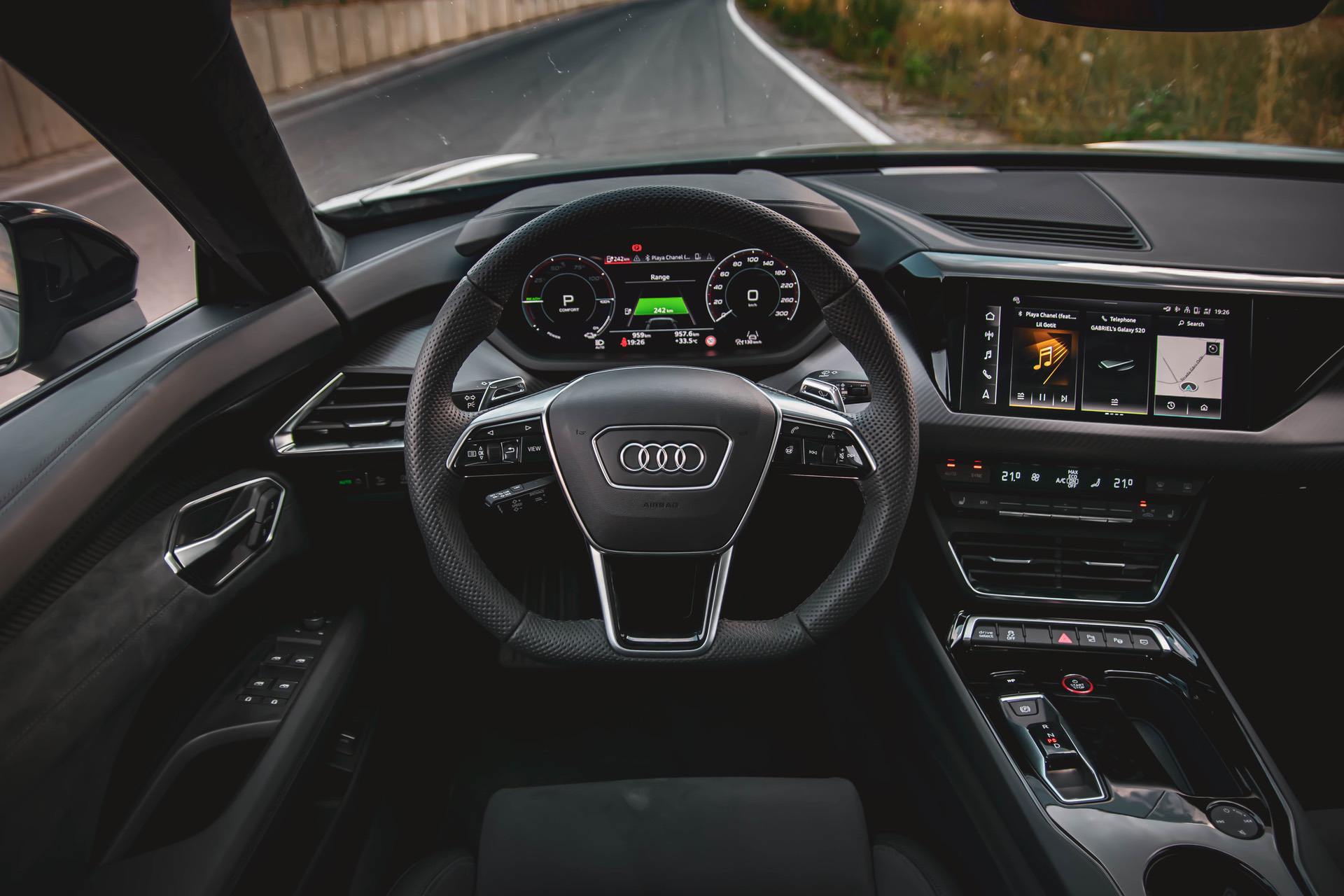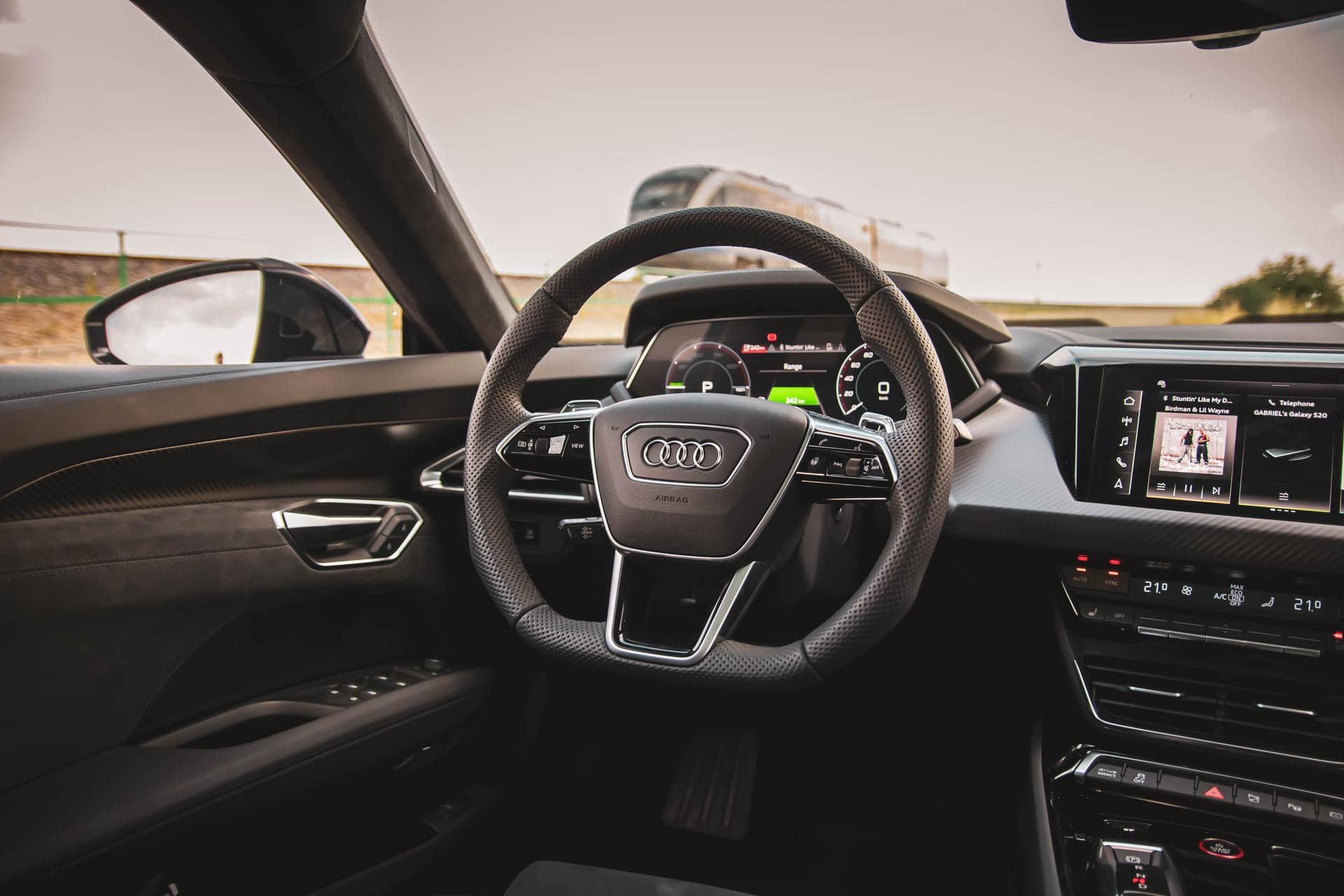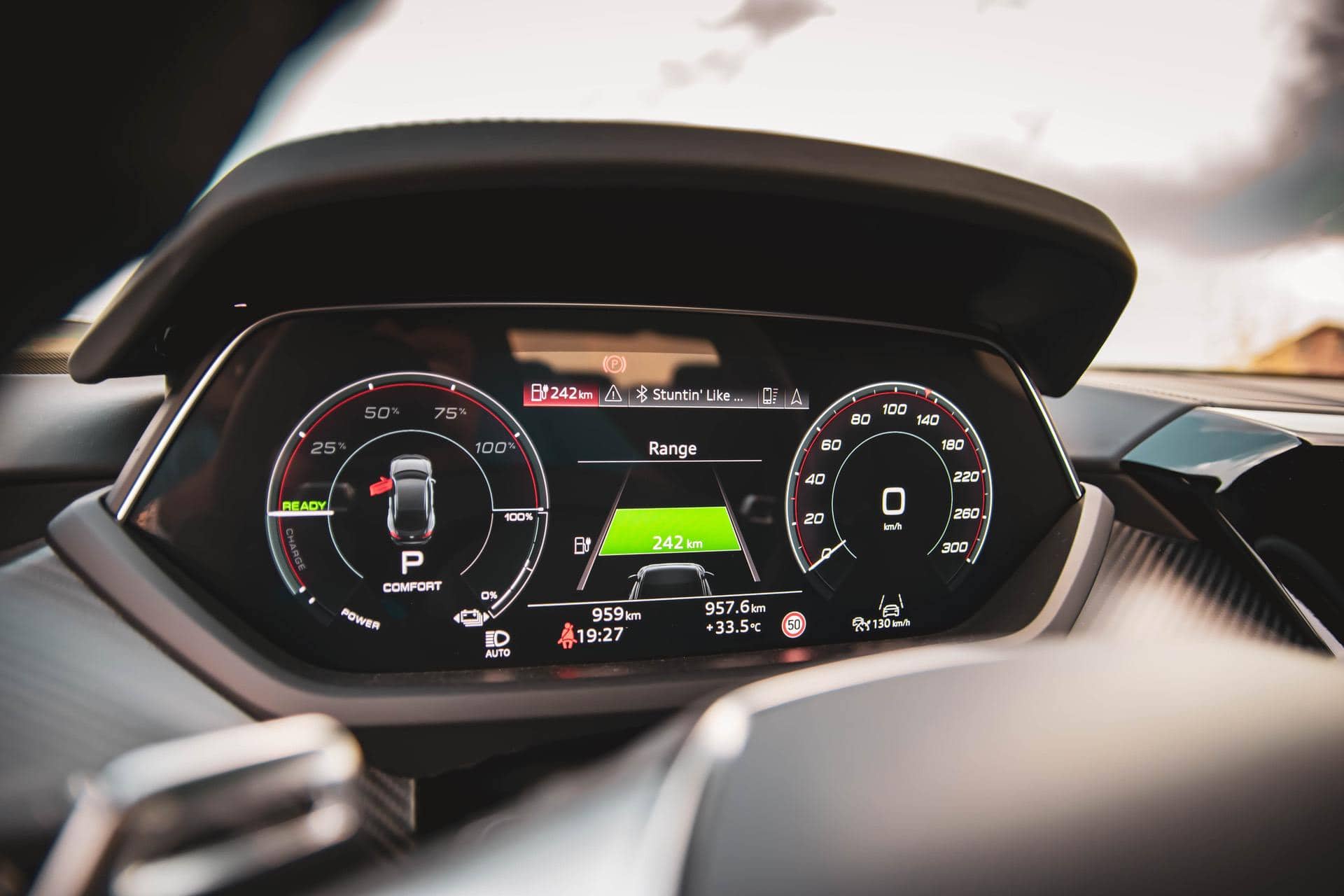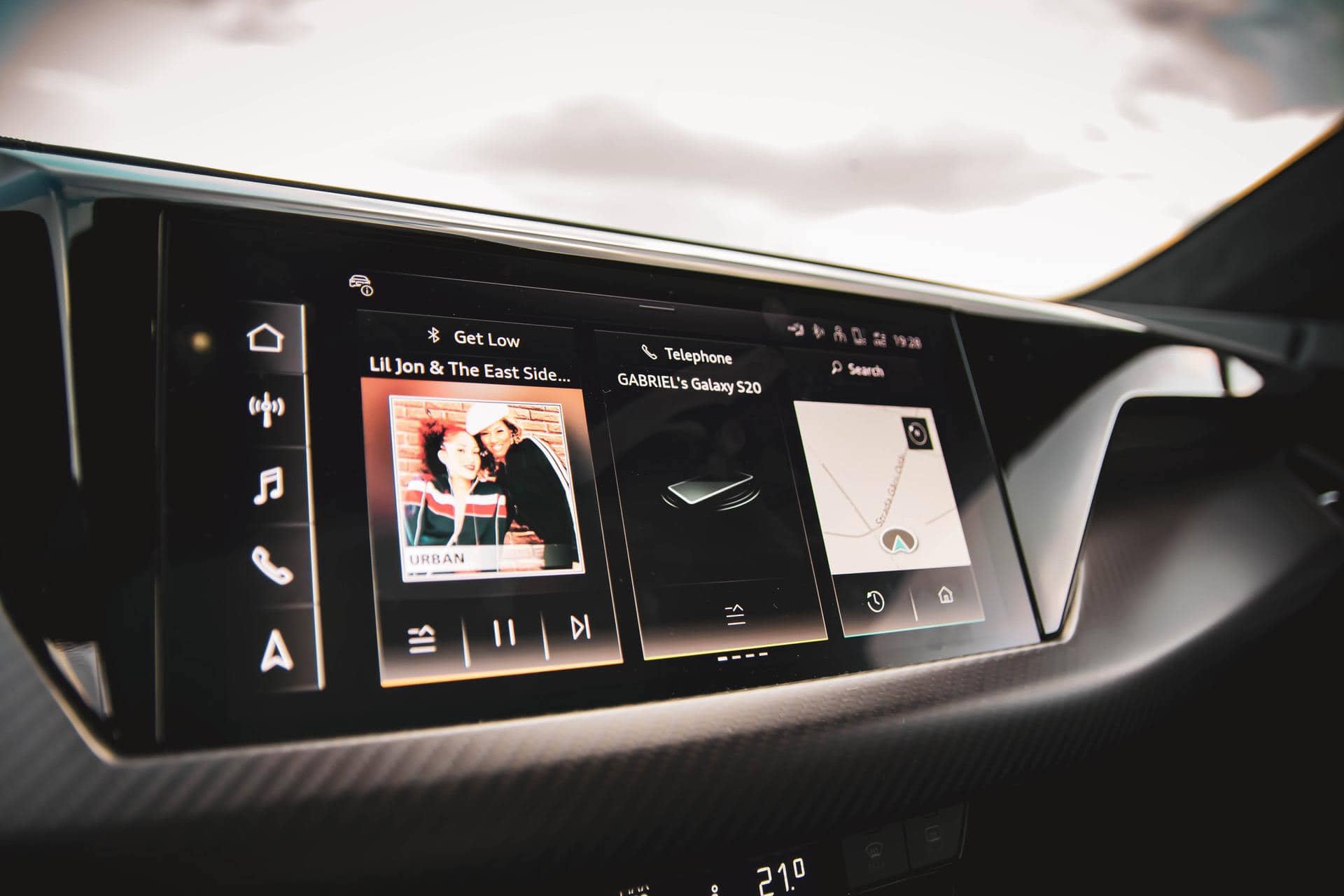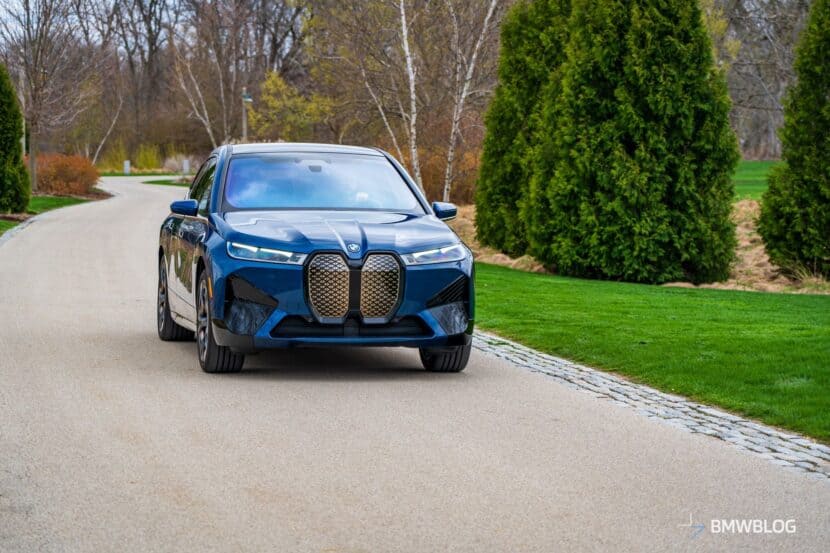As two black veils are pulled back, we’re told “It’s a game changer” and the latest electric models from Audi make their way forward. I’m looking at the Audi e-tron GT, the fastest and — in RS guise — the most powerful car they ever put in production. And yet, the atmosphere is quiet, too quiet for cars that are supposed to get your heartbeat racing the moment you step on the “gas”.
But that’s exactly the point: there is no gas. What we do have though is a model that is meant to change the way we perceive the Audi brand moving forward, their best and most exciting electric model, one that’s supposed to actually make an impact. Can it, though?
Traditional GT With An Electric Drivetrain
It’s been a long time coming but the Audi e-tron GT is finally here. Leaving the ‘game-changer’ tag line behind, what is it exactly? It’s the first attempt from the Ingolstadt-based manufacturer to try and make up for the fact that cars like the Audi R8 are going extinct. It’s meant to combine the characteristics of the mid-engine supercar with those of other RS models, like the RS7 into a quiet, clean and fast package.
By definition, this is a four-door coupe electric model that’s meant to offer both a fun experience behind the wheel as well as comfortable long hauls, just like a traditional GT would do, as the name hints. As for its history, there isn’t much to talk about here, especially since this is a car built, in the usual VAG way, by sharing a lot of its underpinnings with other models under their umbrella. In this case though, that’s a good thing for Audi, as the car it shares parts with and the platform underneath (J1) is the Porsche Taycan. And the world loves the Taycan.
A Head Turner
The Audi also has a very important plus on its side: The design. While I had the e-tron GT at my disposal for a few days, there wasn’t one person that didn’t say it was beautiful. Sure, some details could’ve been done in a less striking way, like the taillights that are a bit too big and dominate the rear end. But that’s not really an issue when you get to see them light up at night and do their little dance. They are a sight to behold.
The overall proportions of the car remind you of the Porsche Taycan straight away. It’s just as low slung and wide as the Porsche, with the wide hips at the back instantly reminding you of Porsches of old. I was enthralled to see them in the rearview mirrors when I tested the Taycan a while back and was glad to see them once again, this time in a car with the famous four-ringed logo on the nose.
But compared to the Taycan, the e-tron GT has a fresh take on older cues. For example, the front fascia, even though it has the same Audi Singleframe design embedded into it, looks unique on the e-tron GT, without any mesh and with simpler lines, as cooling isn’t exactly a necessity on this car but good aerodynamics are. It’s also quite interesting that the front bumper, at least in the section located inside the Singleframe has a certain pattern on it, to remind us of the mesh used on regular Audis.
The headlights are also stunning to look at, with a sleek design and OLED DRLs at the top, they too being asked to do a dance whenever you lock or unlock the car. Our tester also came with Matrix Laser lights that simply lit up the roads at night and made sure nobody around was blinded in the process.
As for the sides, the sleek, long e-tron GT is almost five meters long with and 21” optional RS wheels, which have aerodynamic panels on them added on, to make sure you can squeeze everything you can out of the battery sitting in the floor.
Slightly More Spacious Than The Taycan
While the sleek, low-slung roofline does look cool from the outside, once you step inside the cabin you start noticing the downsides. For starters, the Audi e-tron GT comes, as standard, with a panoramic sunroof and that’s made with a specially treated glass meant to keep things cool and quiet inside. This measure also offers a bit more headroom inside the car, that’s especially noticeable in the back, compared to the Taycan, for example.
Even though a ruler might disagree, the e-tron GT felt a bit more spacious in the back than its Porsche sibling but not by a lot. People over six feet tall will struggle back there, though, especially if those sitting in the front have a similar body build. Any smaller than that and you’ll be good to go. Since this is an electric vehicle and the all-wheel drive character of the car is not done via a driveshaft going from the front to the rear axle, we would’ve loved to have a flush floor.
Up front you get a slightly familiar design and a bit more room. Taller people would have a bit more room here, thanks to the lower mounting position of the front seats. Everything is built according to Audi’s fit and finish standards, and the materials are impeccable all-around, even though an interesting mix was applied here.
It’s obvious that Audi wanted to make this car a bit greener than usual. Therefore, the seats have eco leather on the sides while the center bits are covered in a textile material. There’s Alcantara on the headliner while the dash, center armrest and door panel armrests are covered in optional Nappa leather. One gripe I had with the interior was the rather generous amount of piano black trims on the center console and dash as well as the faux-carbon-fiber trims all around that felt rather cheap to the touch, not far off from the ones used in a Honda Civic Type-R. At least the build-quality was top notch, but in terms of materials, the Porsche Taycan has the edge here. Even the steering wheel was a bit disappointing, being very similar to what you’d find in a run of the mill A6.
The Driving Experience
But those are all details that won’t make or break the final buying decision. What will make or break this car is the way it drives.
As mentioned before, the platform is shared with the Porsche Taycan and that tells you all you need to know. Almost. In e-tron GT guise, the Audi comes with two electric motors, one for the front axle and one for the rear one, allowing it to use the ‘quattro’ badge on the boot without anyone making any fuss.
The front motor makes 238 horsepower while the rear one is capable of delivering 435 horsepower. Don’t go around adding those figures straight up though, as the car can’t deliver all of its resources to the wheels at the same time. Combined, the Audi e-tron GT has up to 476 horsepower while for very short bursts it can go up to 530 horsepower. Total torque is rated at 640 Nm (472 lb-ft) and that doesn’t change.
Just like the Taycan, the e-tron GT also gets the two-speed gearbox for the rear axle, a nifty trick up its sleeve, that’s meant to speed things up when accelerating and offer better efficiency at highway speeds.
There’s also an e-tron GT RS available with over 600 horsepower but that’s a topic for a different review. No matter which one you get, the battery is exactly the same, with a usable capacity of up to 85 kWh and an estimated range of up to 450 km according to the WLTP testing cycle. But does that number hold any water?
A Great Commuter Also
Around town, the e-tron GT is almost easy to drive. I’m saying almost because, as you would expect, with such a low slung roofline and small windows, the driver’s visibility is significantly hindered. Parking is not an issue, as you get surround view cameras with perfect resolution, but driving around town is a bit nerve-racking. Furthermore, this is a very low riding car. It doesn’t come with adaptive air suspension as standard, but if you do have it, switching to ‘Efficiency’ driving mode lowers the ride height to make it a bit more streamlined. Luckily, the same system allows you to raise the car in case you need to get over bigger obstacles. And yes, it should be standard, considering the price tag.
As for the range, the average energy consumption recorded during my time with the car, at an average speed of 19 km/h was 26 kWh/100 km covered. That adds up to a range of about 326 kilometers with a single charge. Not bad, not terrible, but somehow the Porsche Taycan 4S was a bit more efficient, despite wearing Michelin Pilot Sport 4S tires instead of Goodyear F1.
It is also around town that you notice how quiet the car is and the V8 rumble it emits when driving slowly. It’s quite intriguing but the sound the car makes definitely was inspired by the mill found in the RS6 today.
The acceleration is also just as you would imagine. Mash the ‘go-faster’ pedal and the e-tron GT lunges ahead, jumping like a scared cheetah in the blink of an eye. It’s not just the immediacy of the acceleration that scares you initially but also the pace at which you accelerate well past the usual 100 km/h benchmark. Furthermore, at around 80-90 km/h (it’s hard to tell exactly, as speed piles on very fast) you feel the second gear kicking in with a big shove in the back of your neck that’s actually very old-school feeling. It reminded me of the brutal character of the SMG gearboxes found on cars like the E60 M5.
With such speeds you’ll immediately leave the city and head out into the ‘wild’ and that’s where you can actually enjoy the car’s specs. Outside the confines of a big, crowded urban area, the e-tron GT can unwind and, if you take it to a couple of canyon roads, you can feel it work under the sheet metal.
The air suspension does a good job at keeping the hefty weight of the car in check. However, it does show its limits at times. We are talking about a 2,350-kilo car after all and that’s nothing to scoff at. Push the etron GT hard into a corner and even those massive 295-front and 305-rear tires will start squealing, looking for traction. You feel the weight pushing from underneath you, towards the ravines on your left and right and you tone it down once you instinctively tone it down after you reach illegal speeds. It’s all about how much speed you carry into a corner.
Luckily, the standard brakes do a great job and I never felt like I needed to give them a brake or any sort of fade. At the same time, the steering was as numb as it gets and I often found myself doing small corrections with the steering wheel, just to get a sense of what’s happening up front.
This was the first Audi that didn’t understeer though and it’s easy to see why. Unlike most Audis out there (didn’t get to drive the R8) the weight of the engine over the front axle isn’t an issue. Therefore, the nose of the car was keen to turn in. Coupled with the instant torque and massive power levels pushed on the rear axle, together with an optional limited-slip differential mounted in the same place, this car can turn like you wouldn’t believe, even drifting under hard acceleration.
But just how much fun can you have before the battery runs out? Well, just like it’s the case on a ‘regular’ car too, that depends on how much fun you’re having. The faster and harder you’re driving, the more ‘juice’ the e-Tron GT will sip. Outside the city limits, driving the car on b-roads, with an average speed of 70 km/h I saw an average energy consumption of 16 kWh/100 km, which adds up to a range of about 515 kilometers. Hop on the highway and keep it at 130 km/h and you’ll see that consumption go up to 22 kWh/100 km and the range drop to 370 kilometers.
Is that bad? Not really. It’s more than decent for a first effort from Audi, for a car that’s meant to be enjoyed first of all and make you forget about all this math for a change. And the e-tron GT can alleviate that sort of stress because it can be recharged with up to 270 kW, which is the most any electric car can take from the network these days. If you get to a charger this powerful, you could recharge your battery up to 80 percent in about 20 minutes. And that’s a big IF. Such chargers are very rare so you’ll probably be using 150 kW or 50 kW chargers most likely and with those, the charging times drop a bit.
So Is It Better Than The Porsche Taycan?
At the end of the day though, the question on everyone’s mind is this: Is it better than the Taycan? The answer is no, but you don’t really care. The Taycan 4S, as surprising as it may sound, was a bit better planted somehow, felt a bit more precise overall. Even though the powertrain is the same, the suspension magic the engineers in Stuttgart did and the proprietary tech Porsche has, make it a bit better to drive.
The difference is minuscule though and you can only tell if you drive them back to back and have a keen eye for the differences between them. Both cars are capable but the Porsche is just 1% better when you go right at the edge.
Does that make the Audi the worse car? Not even close. As a matter of fact, this writer would take the e-tron GT home instead of the Porsche, believe it or not, thanks to its better looks, inside and out. And since racing to the store and back gets tiring after a while, I’d save the extra money for some other fun activities.




